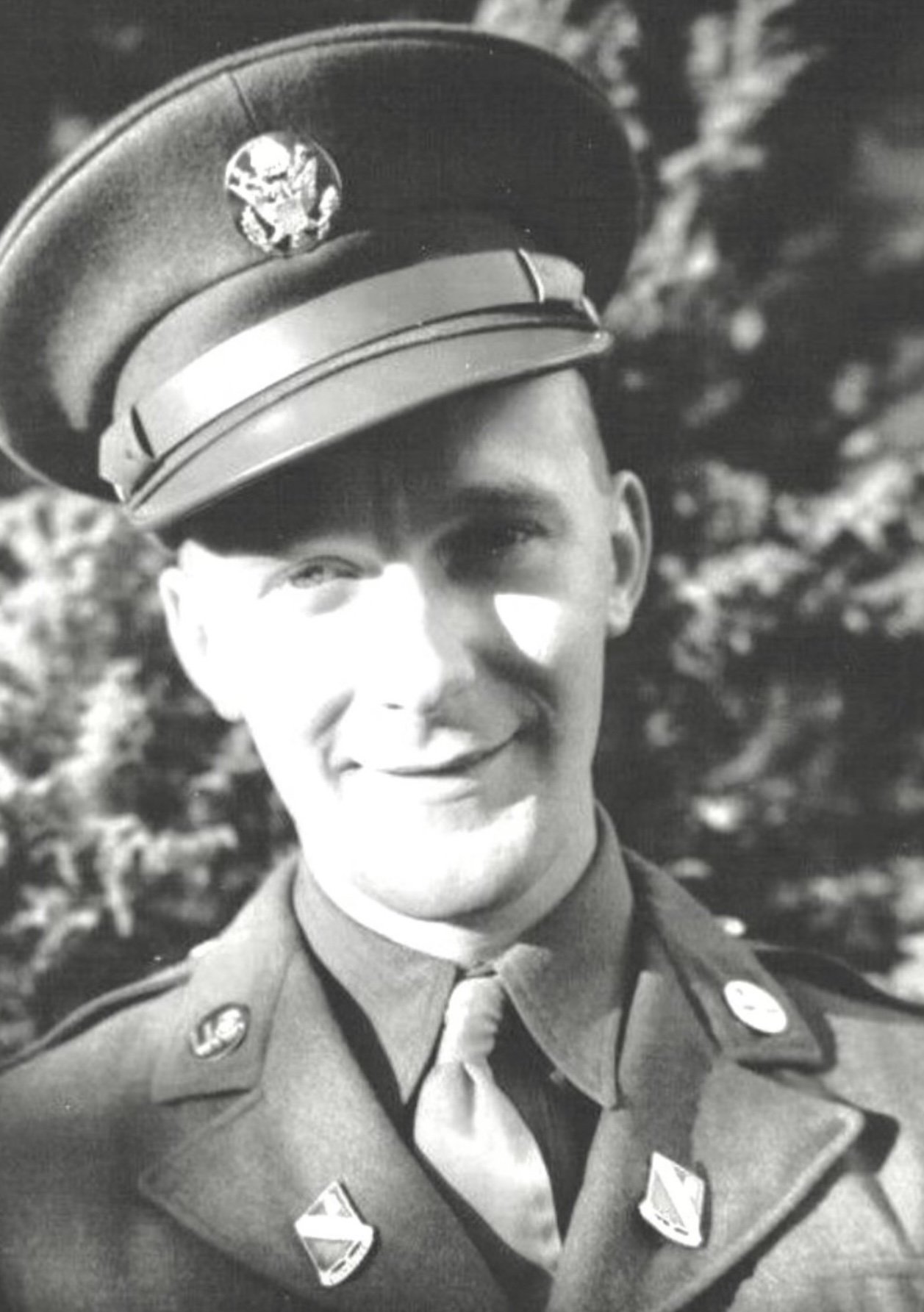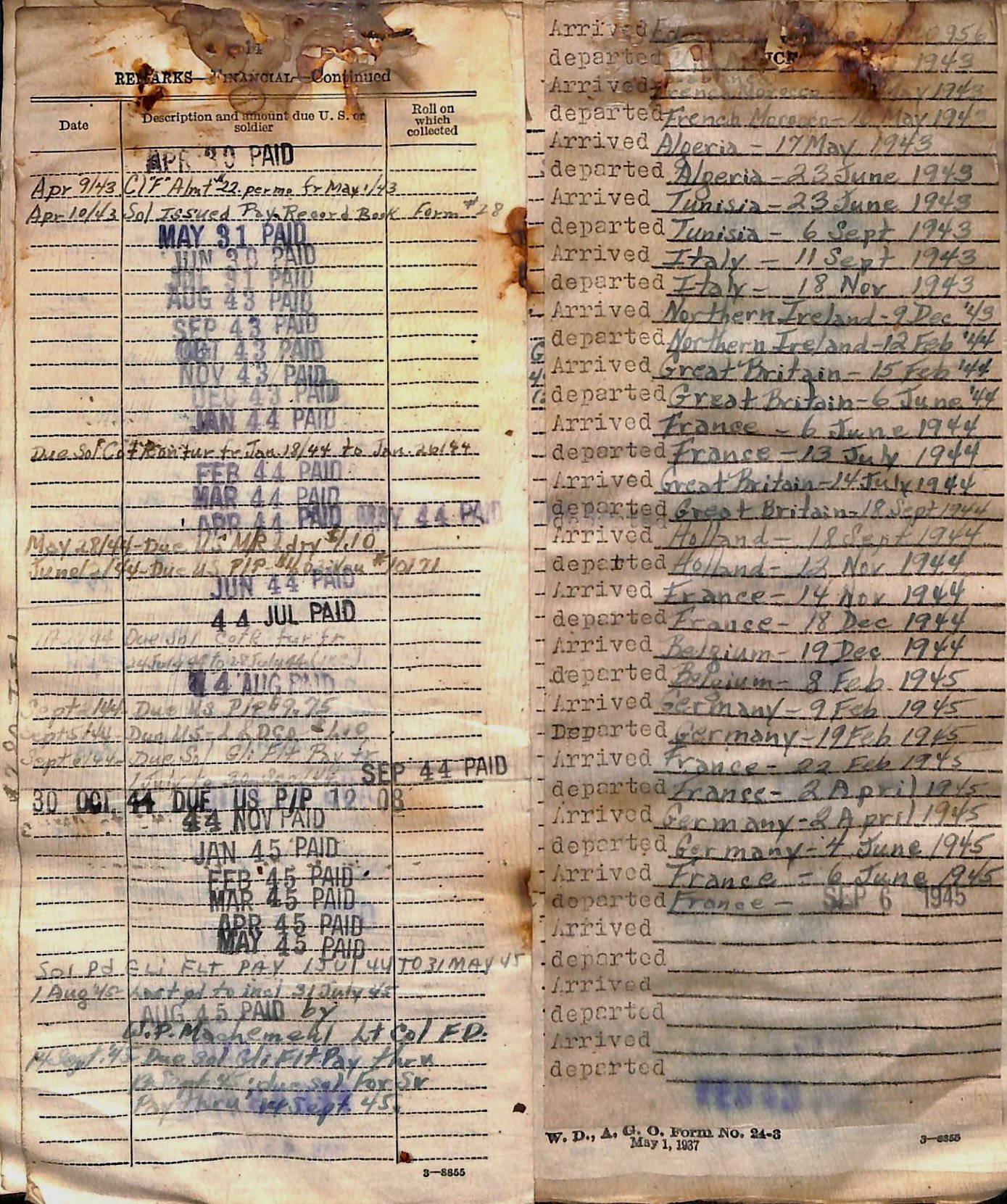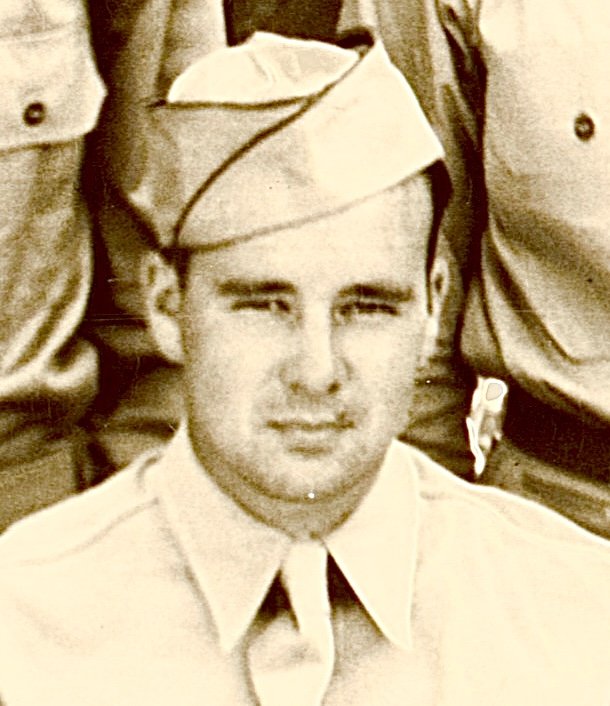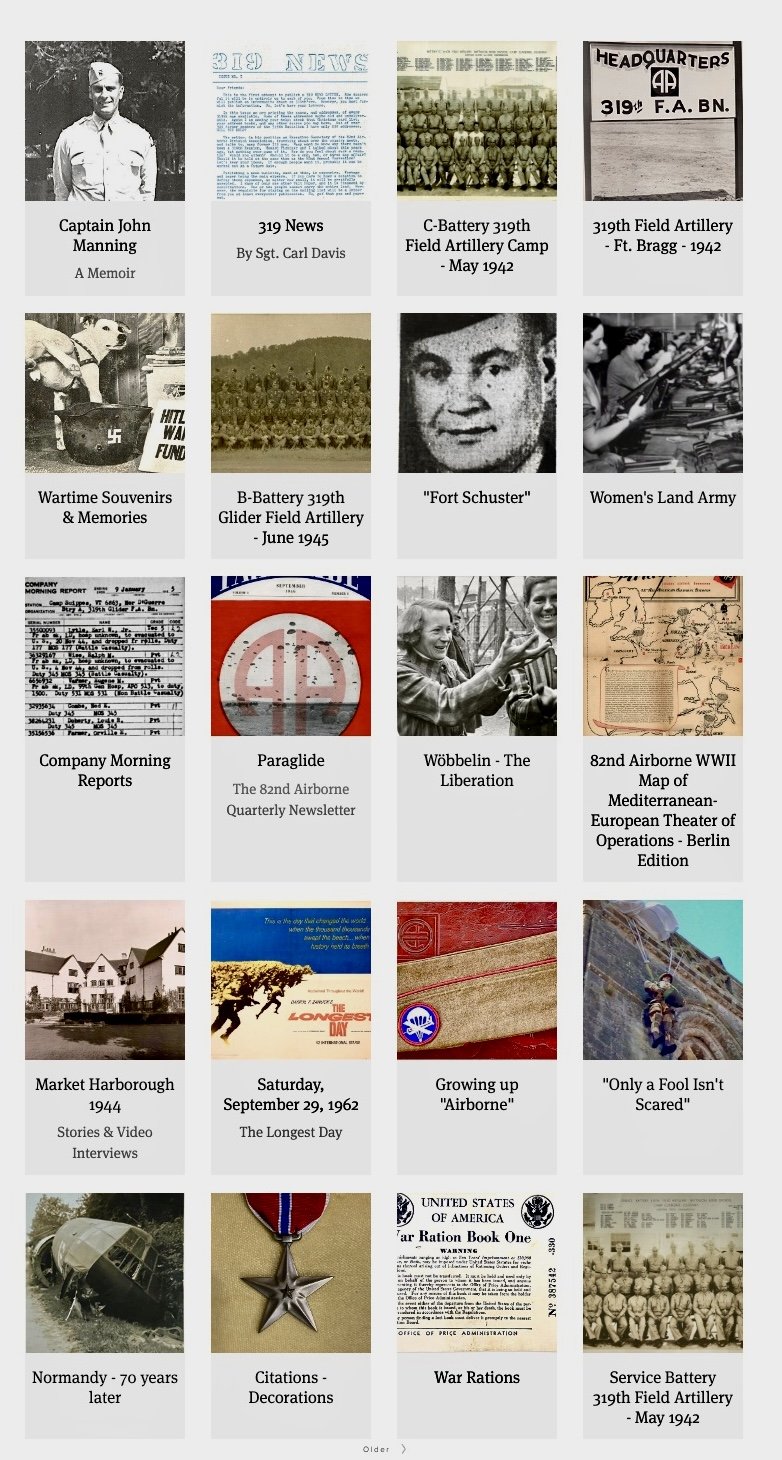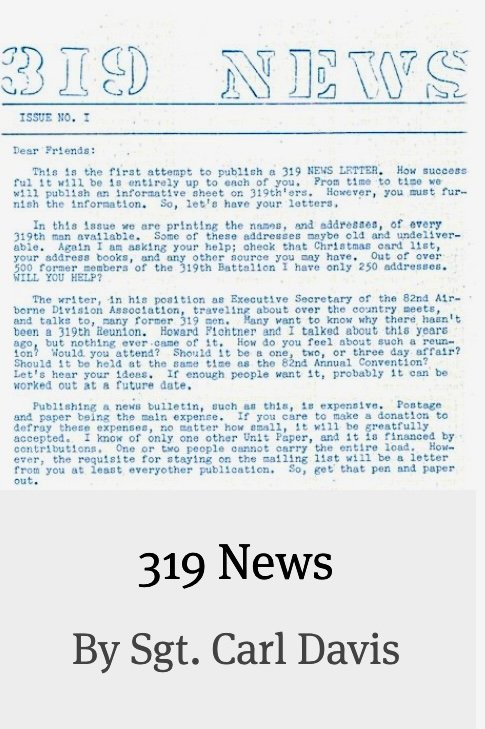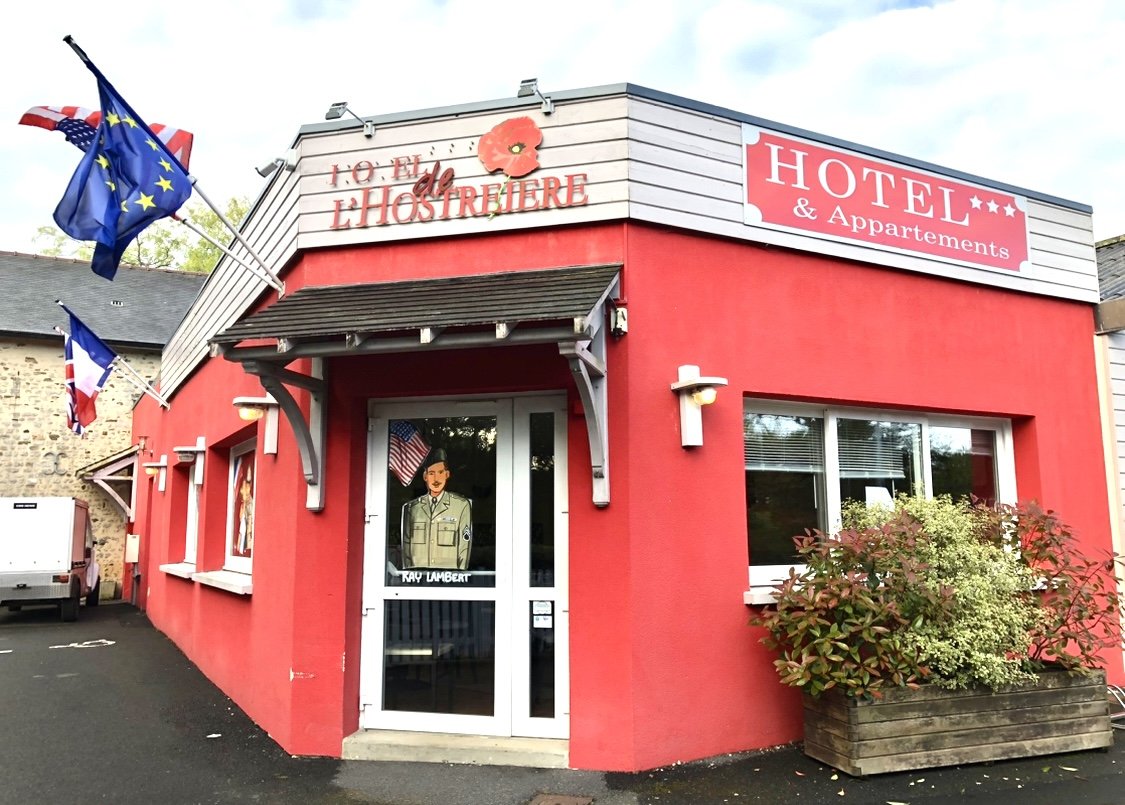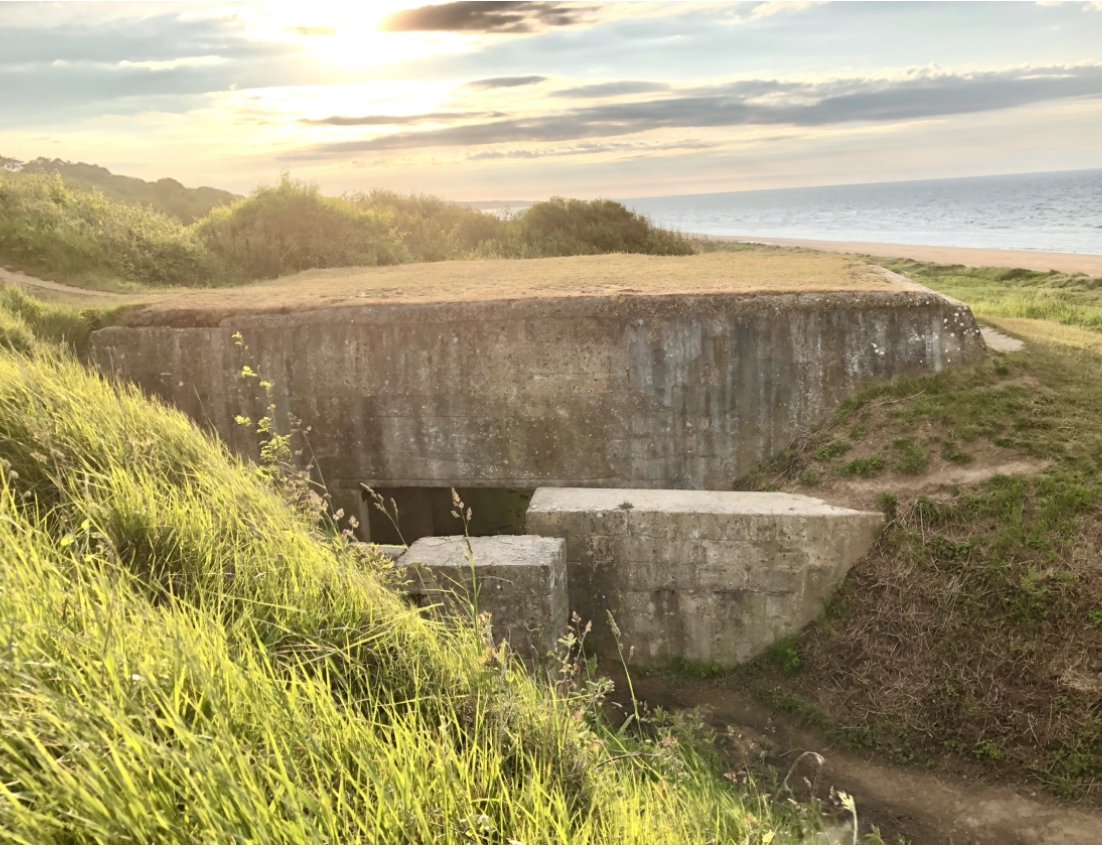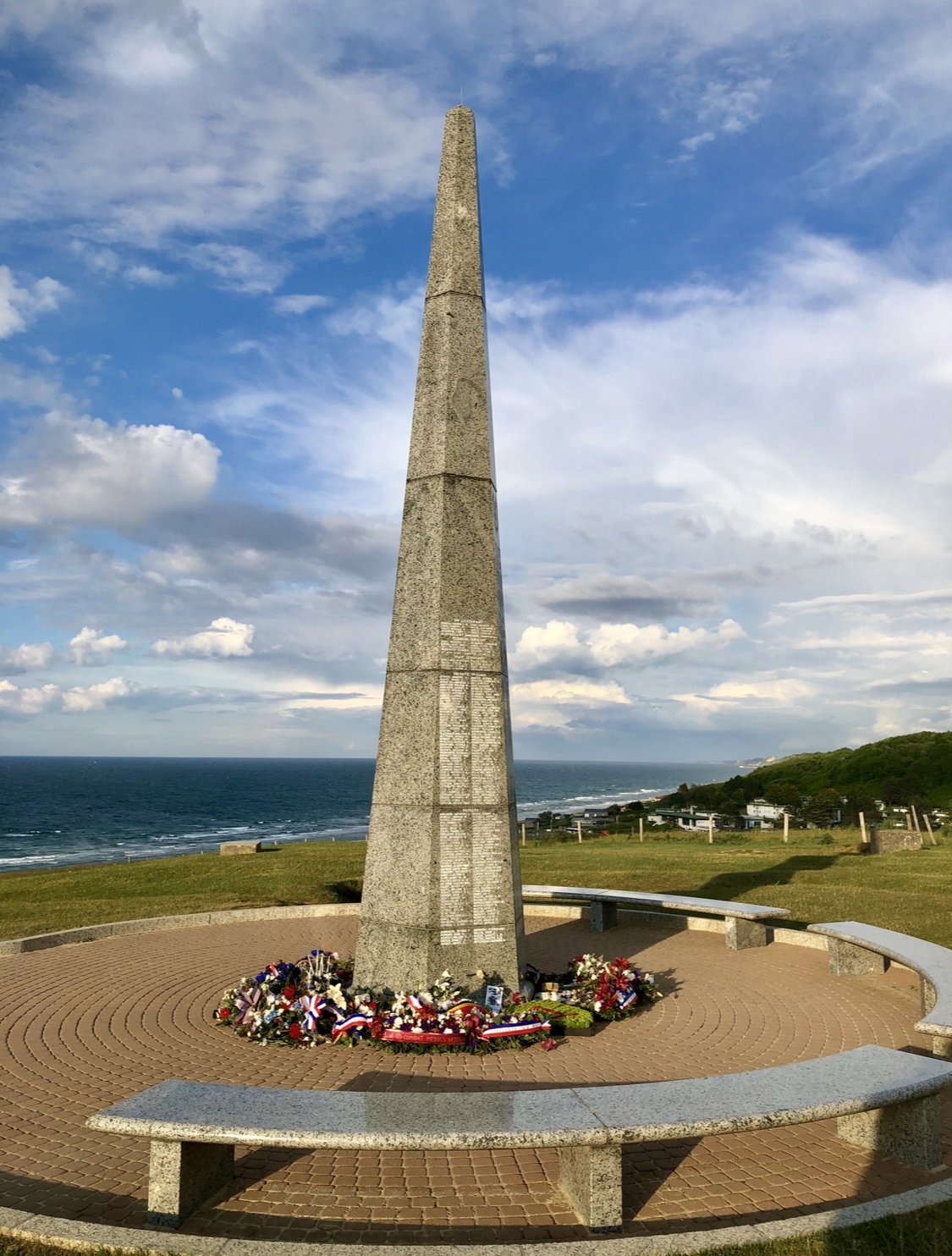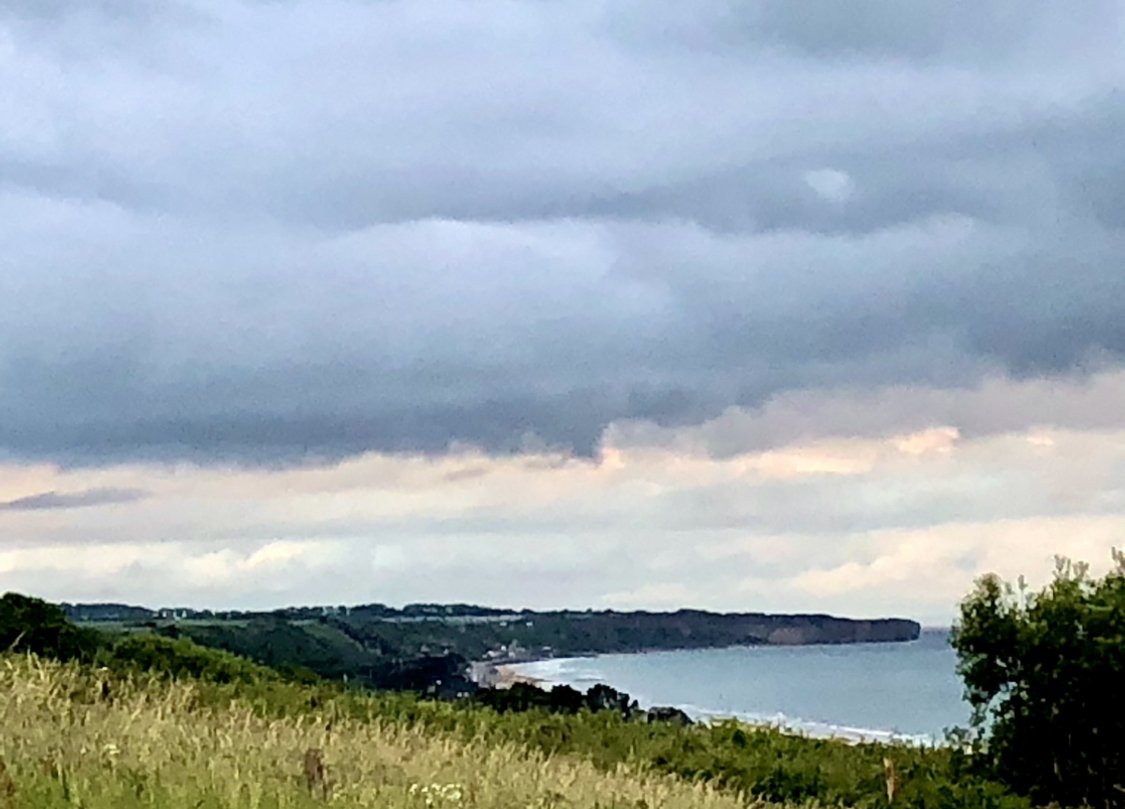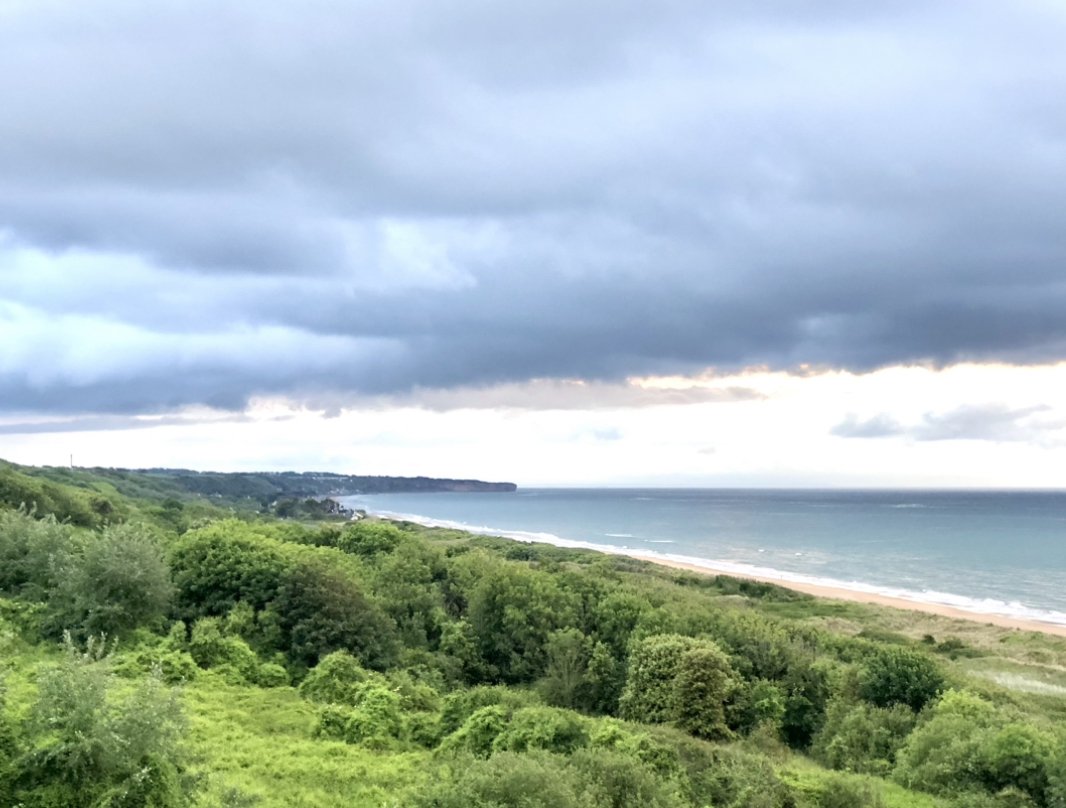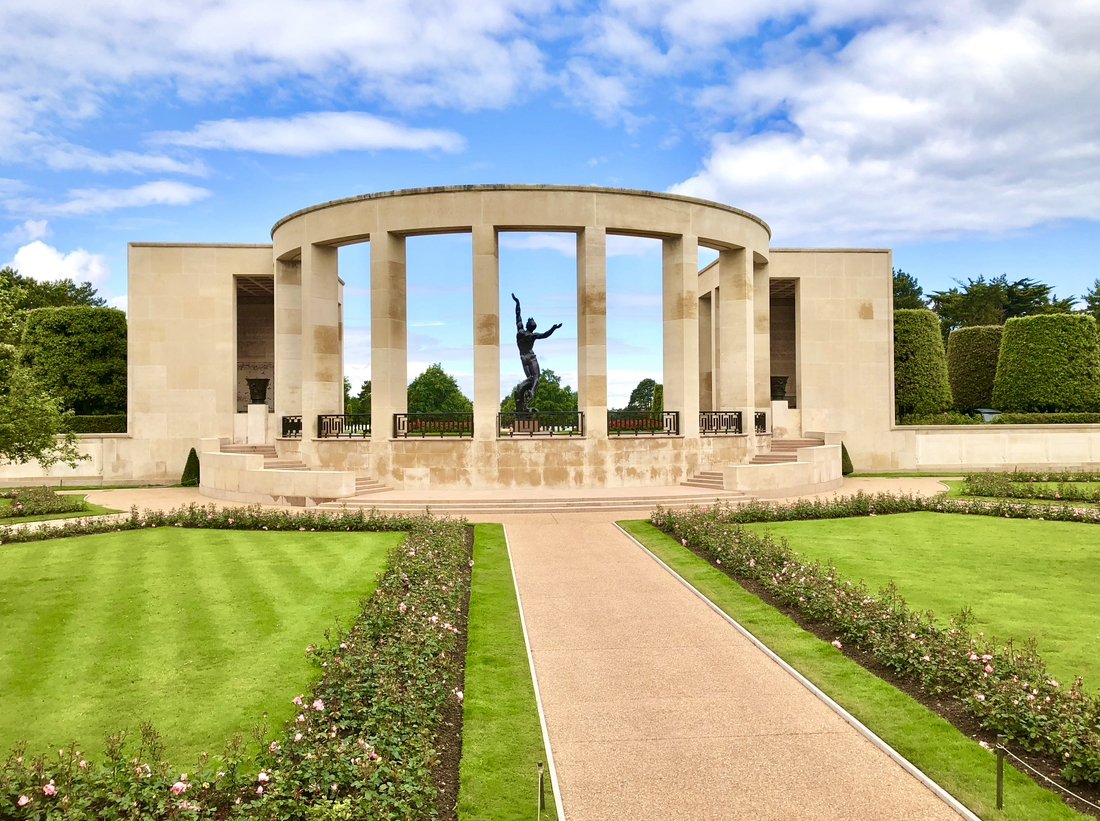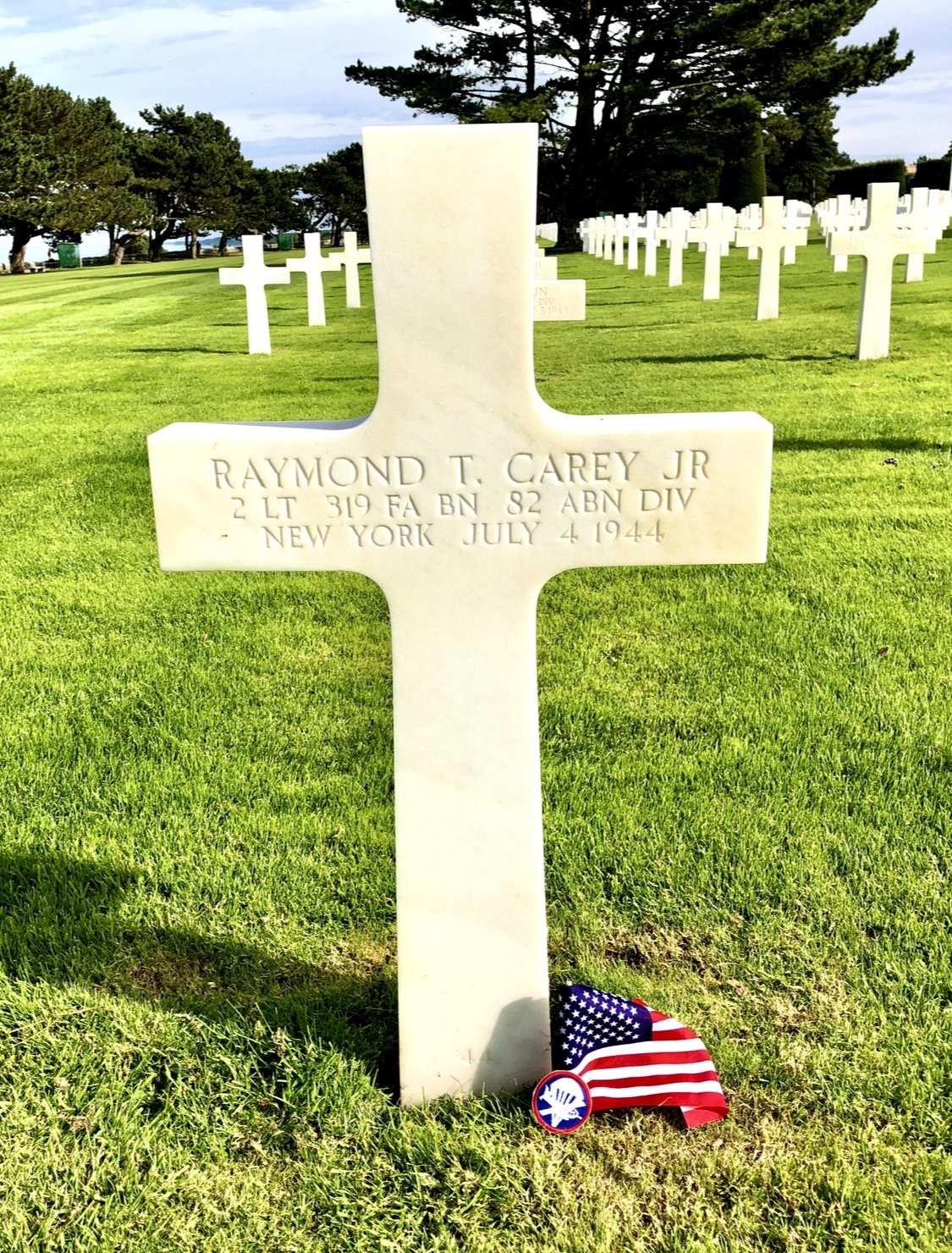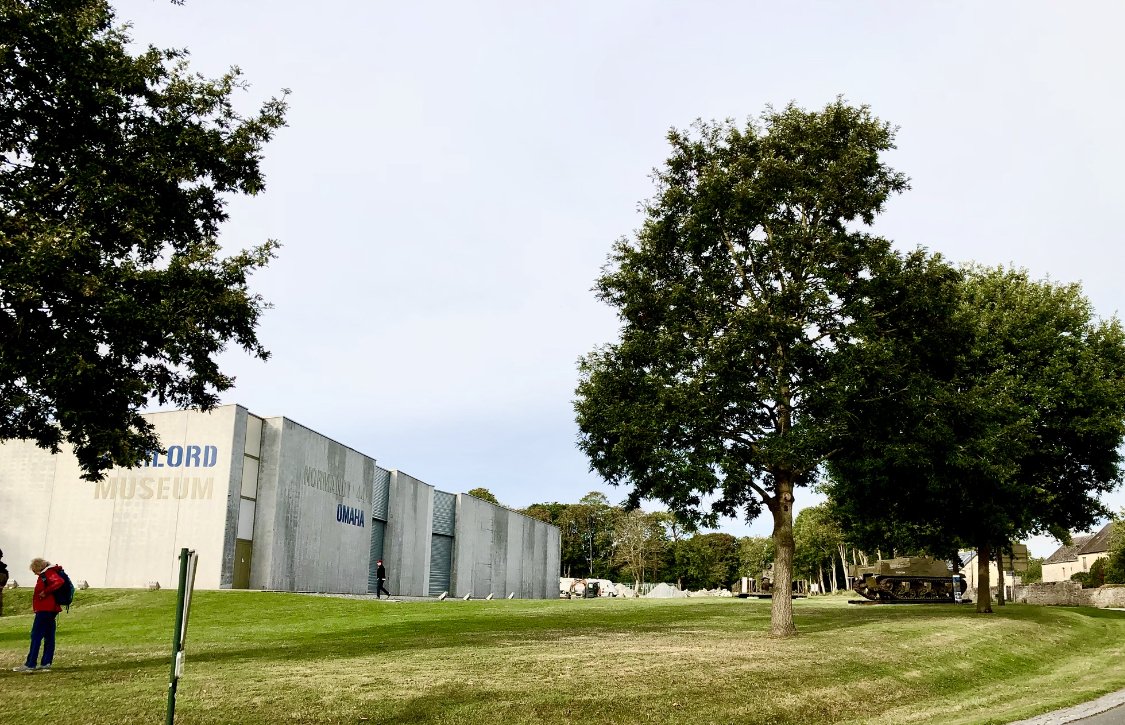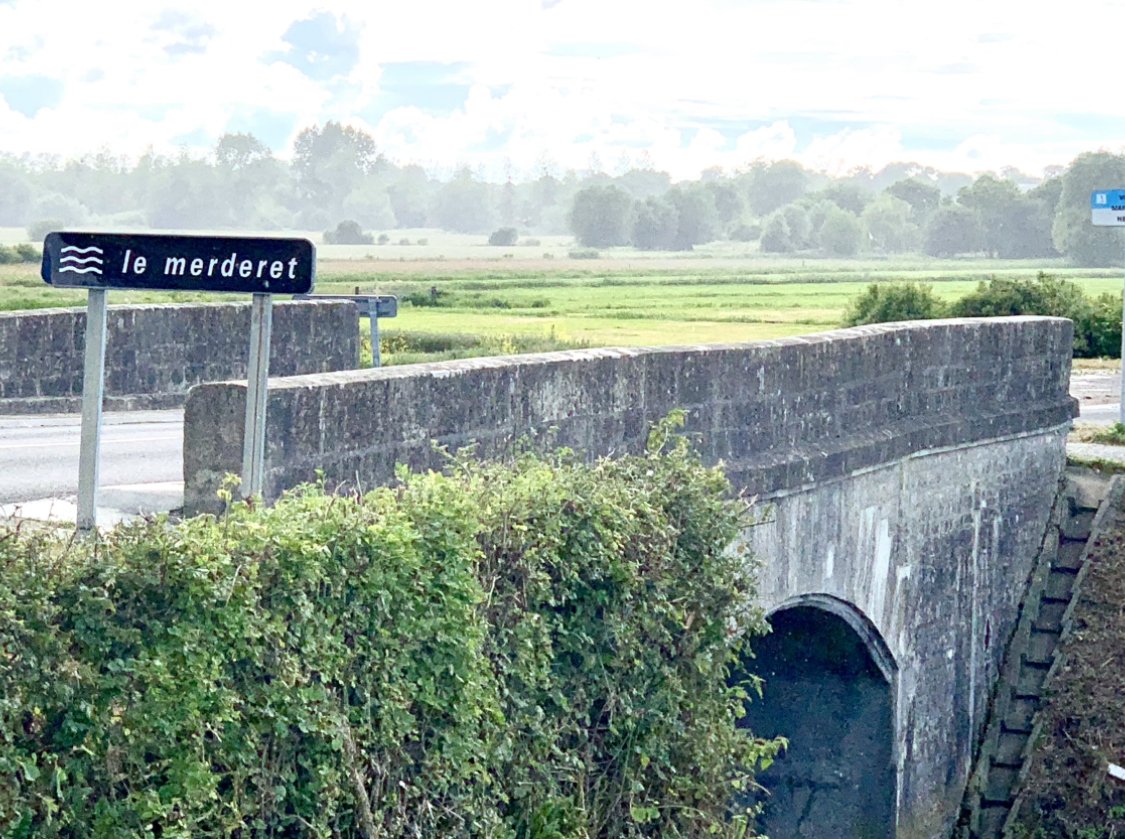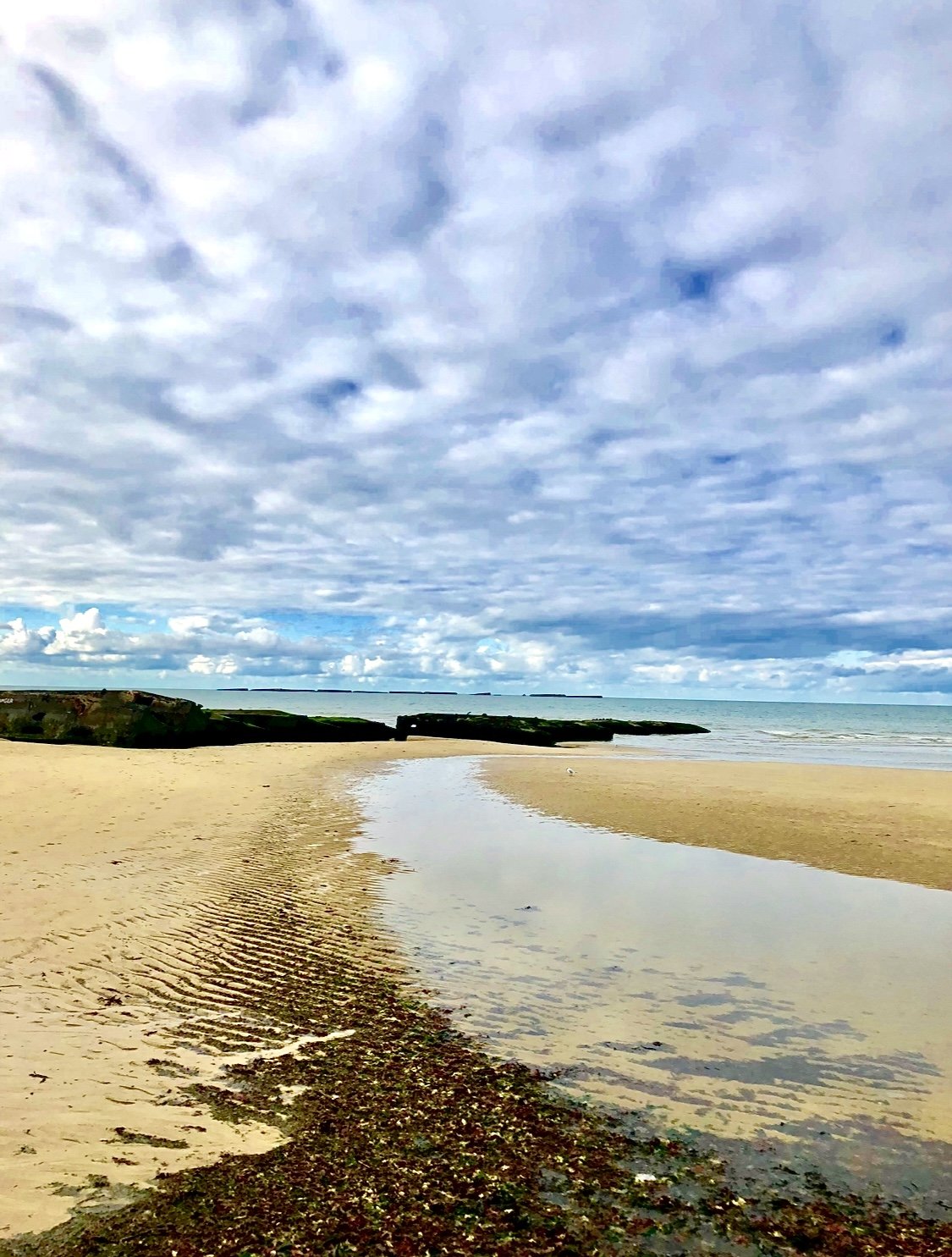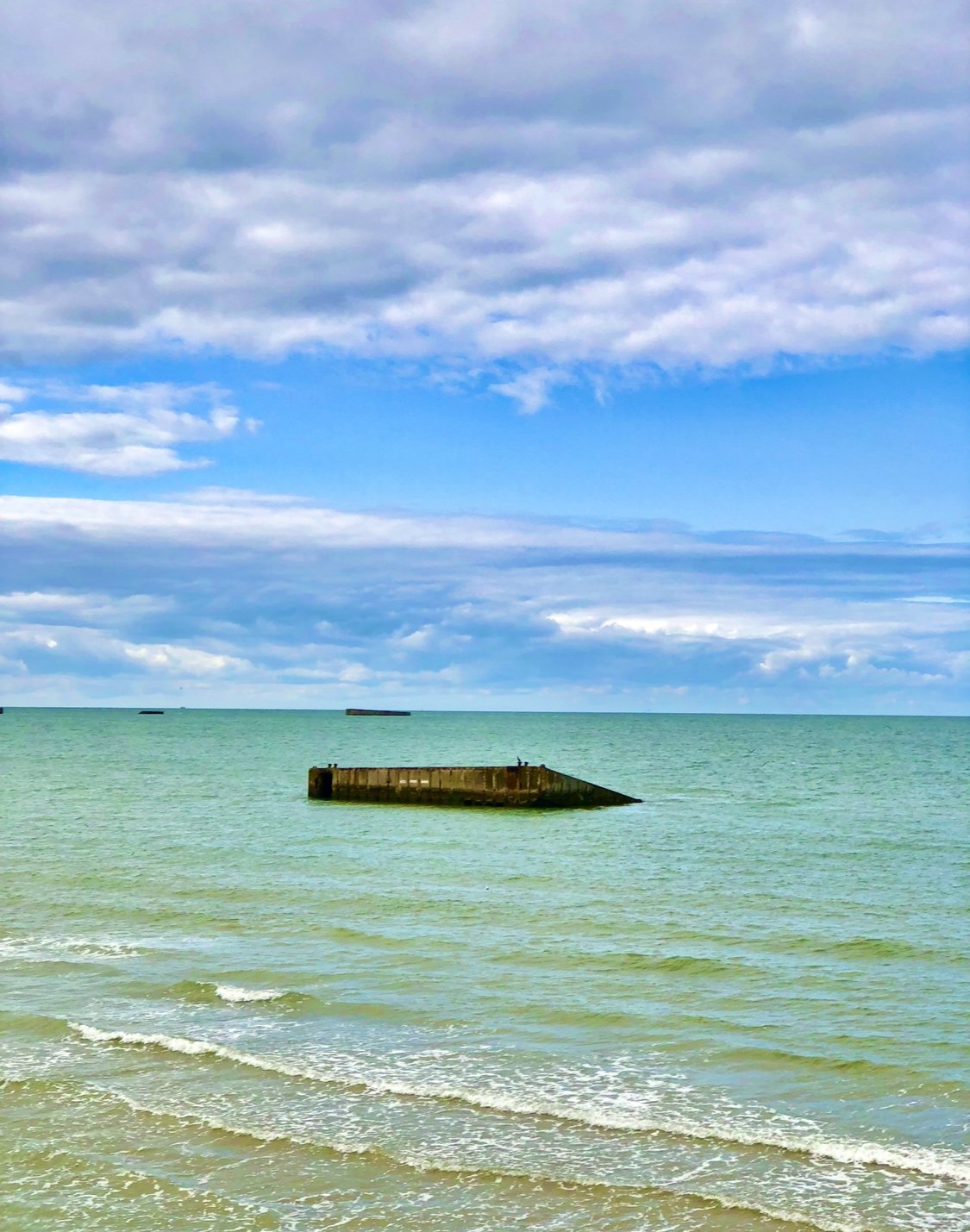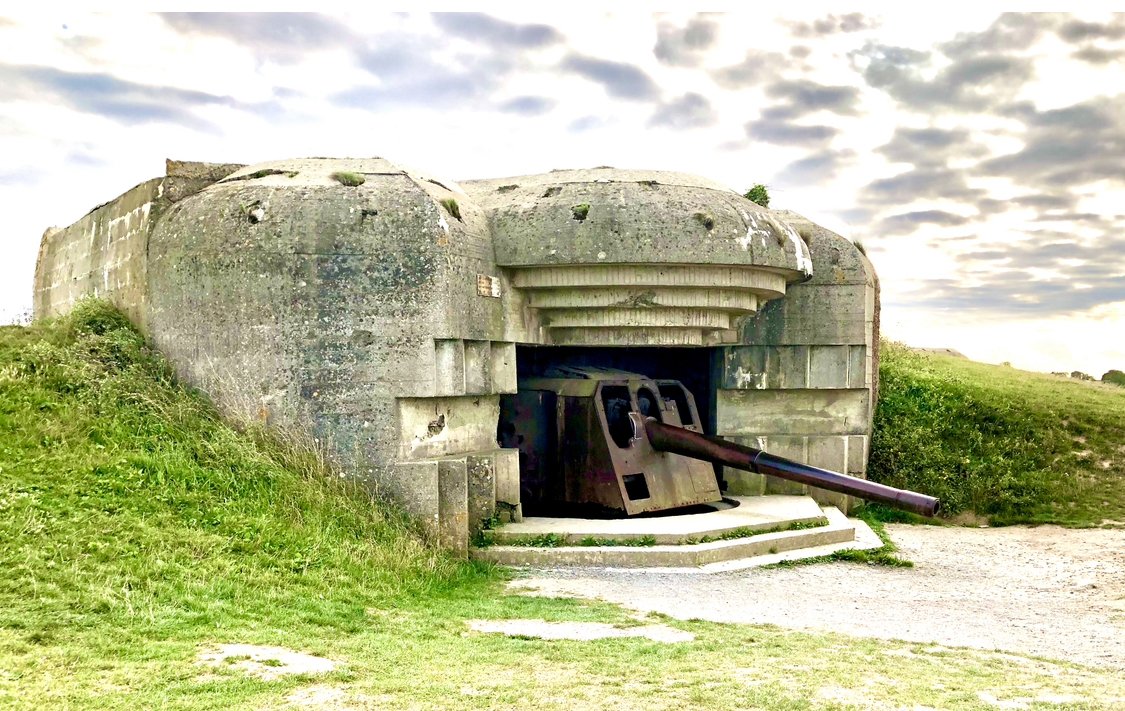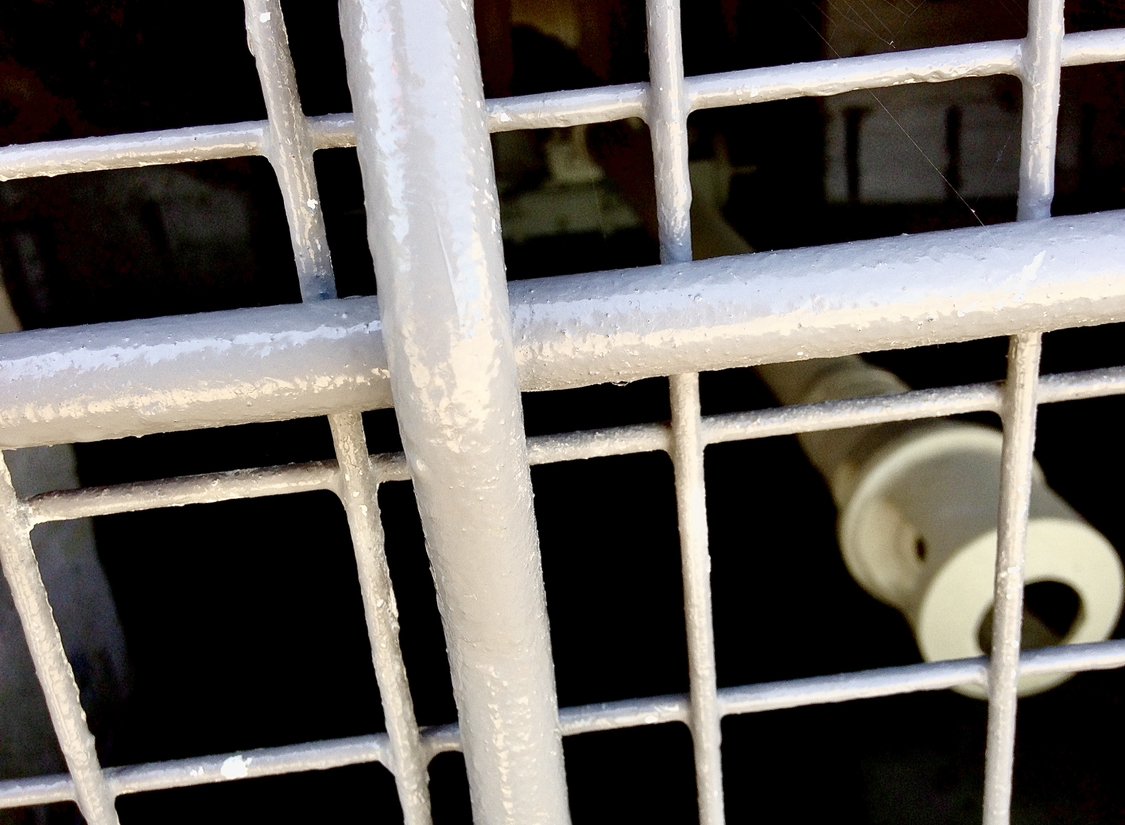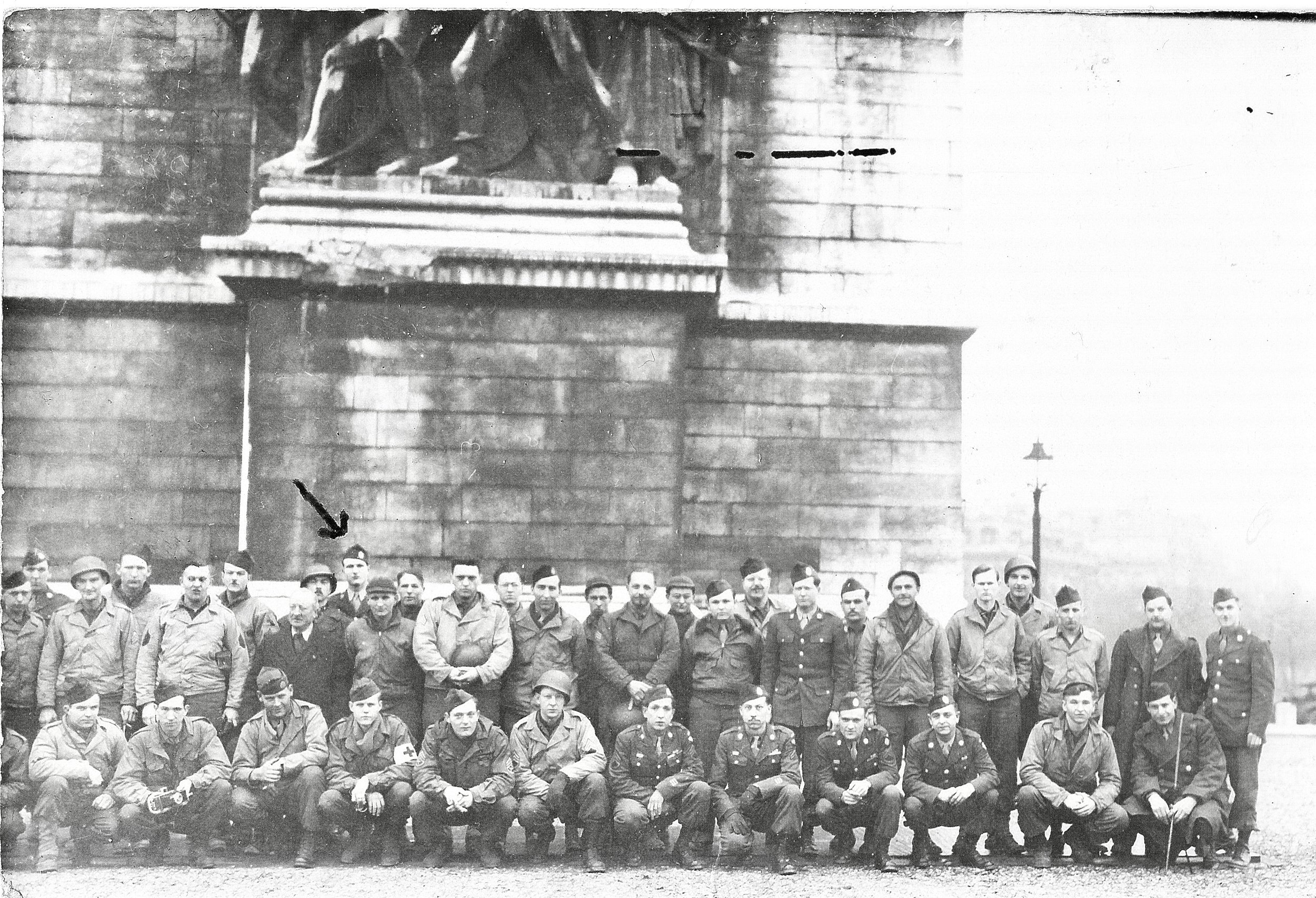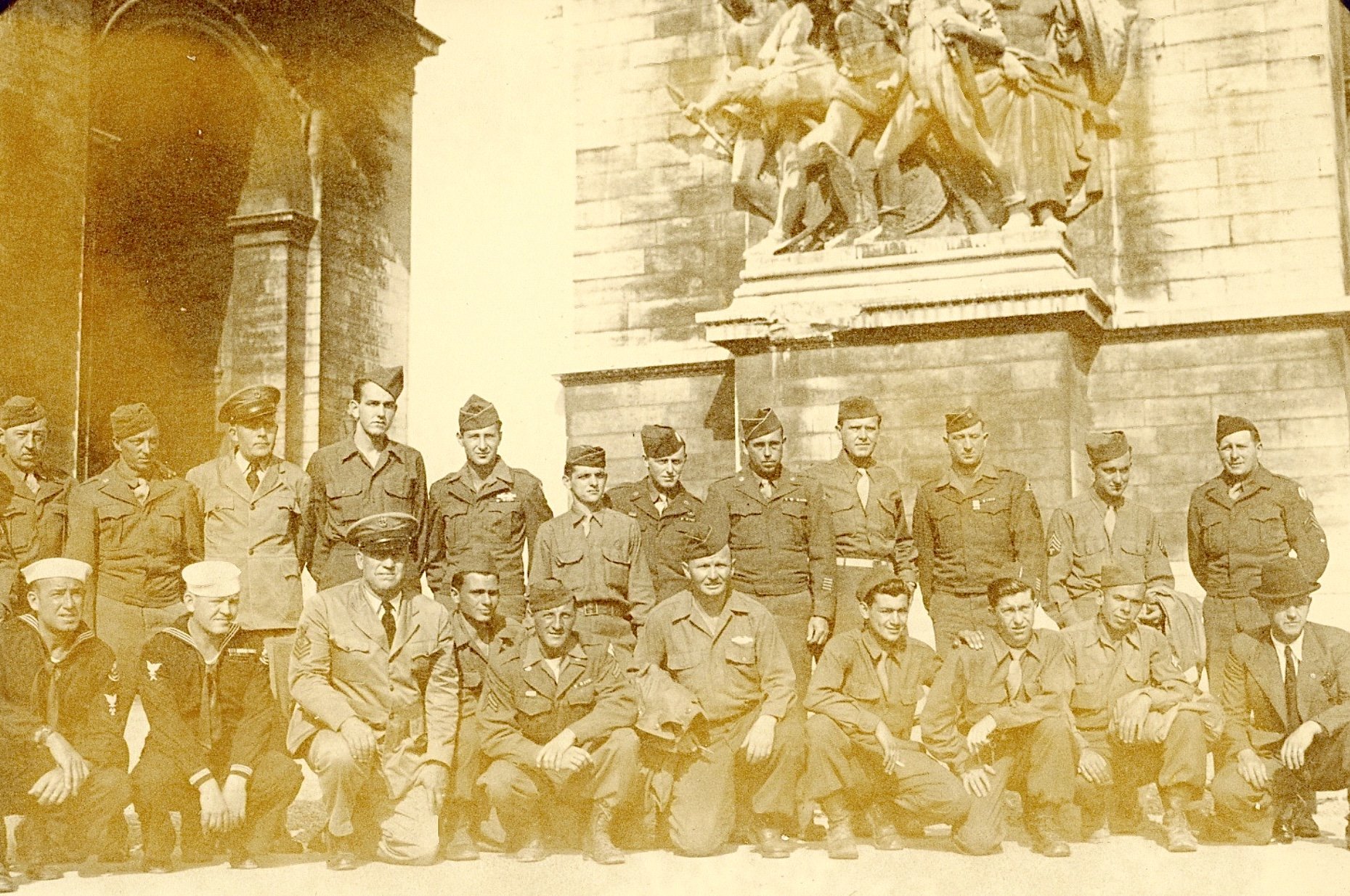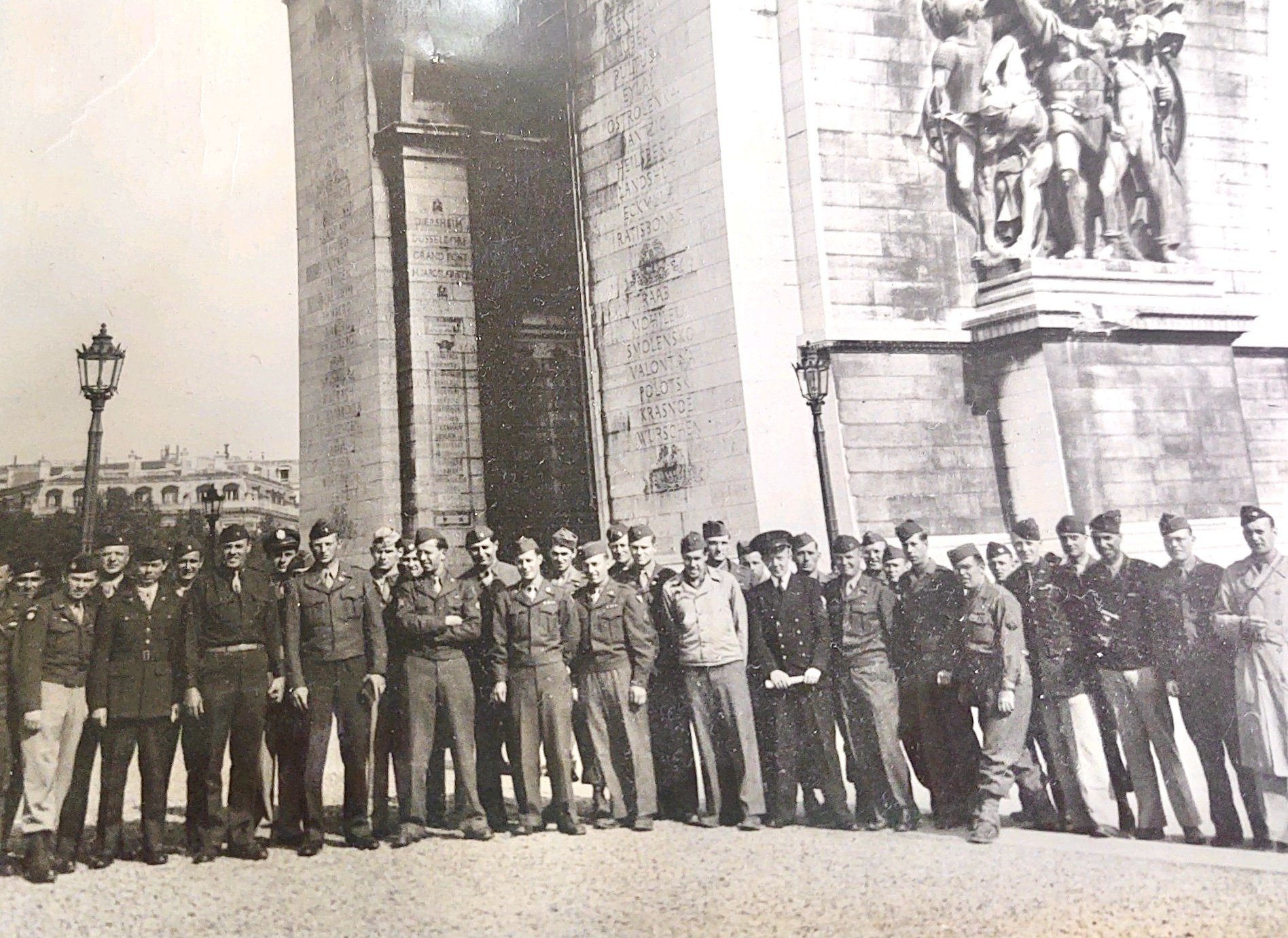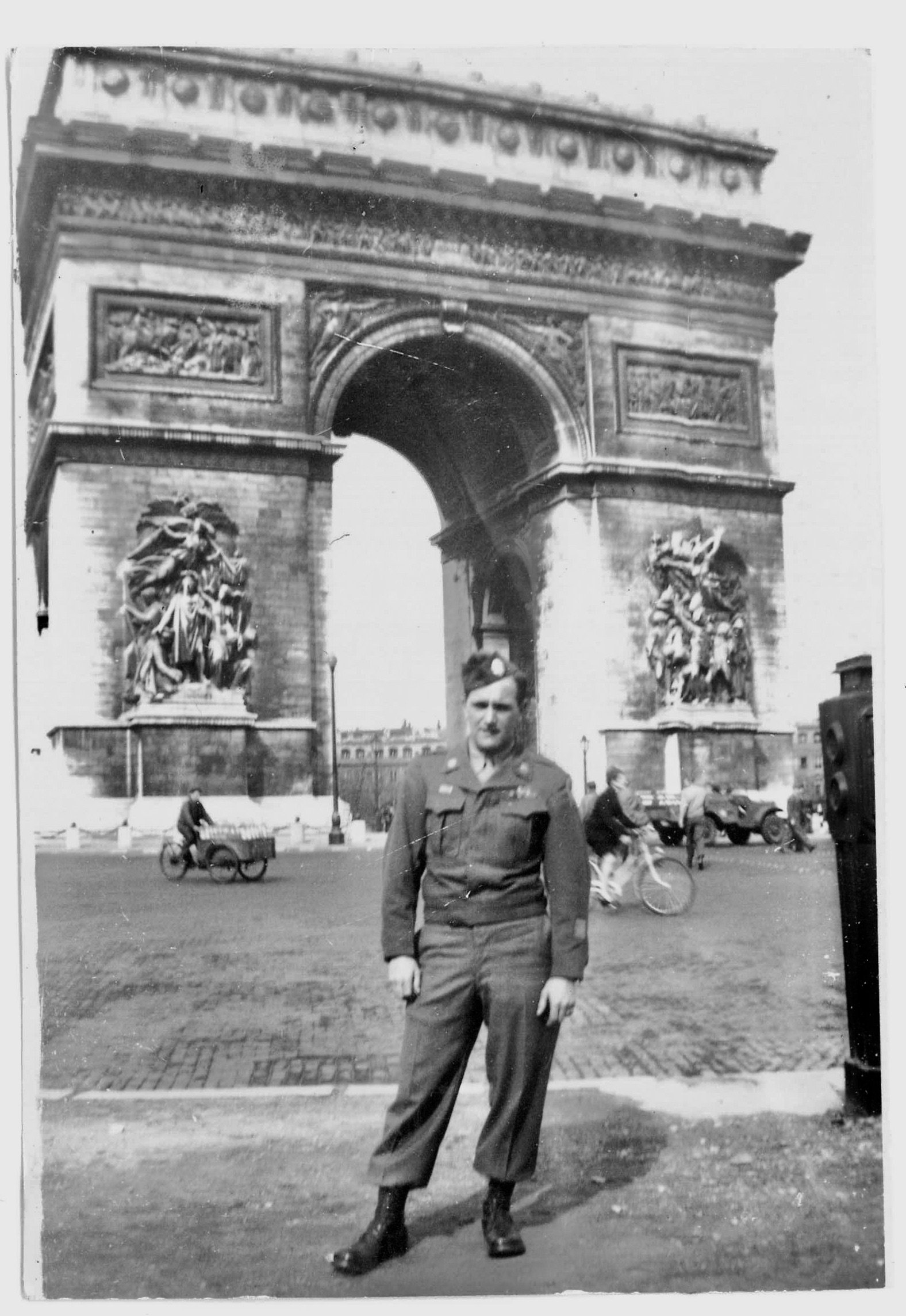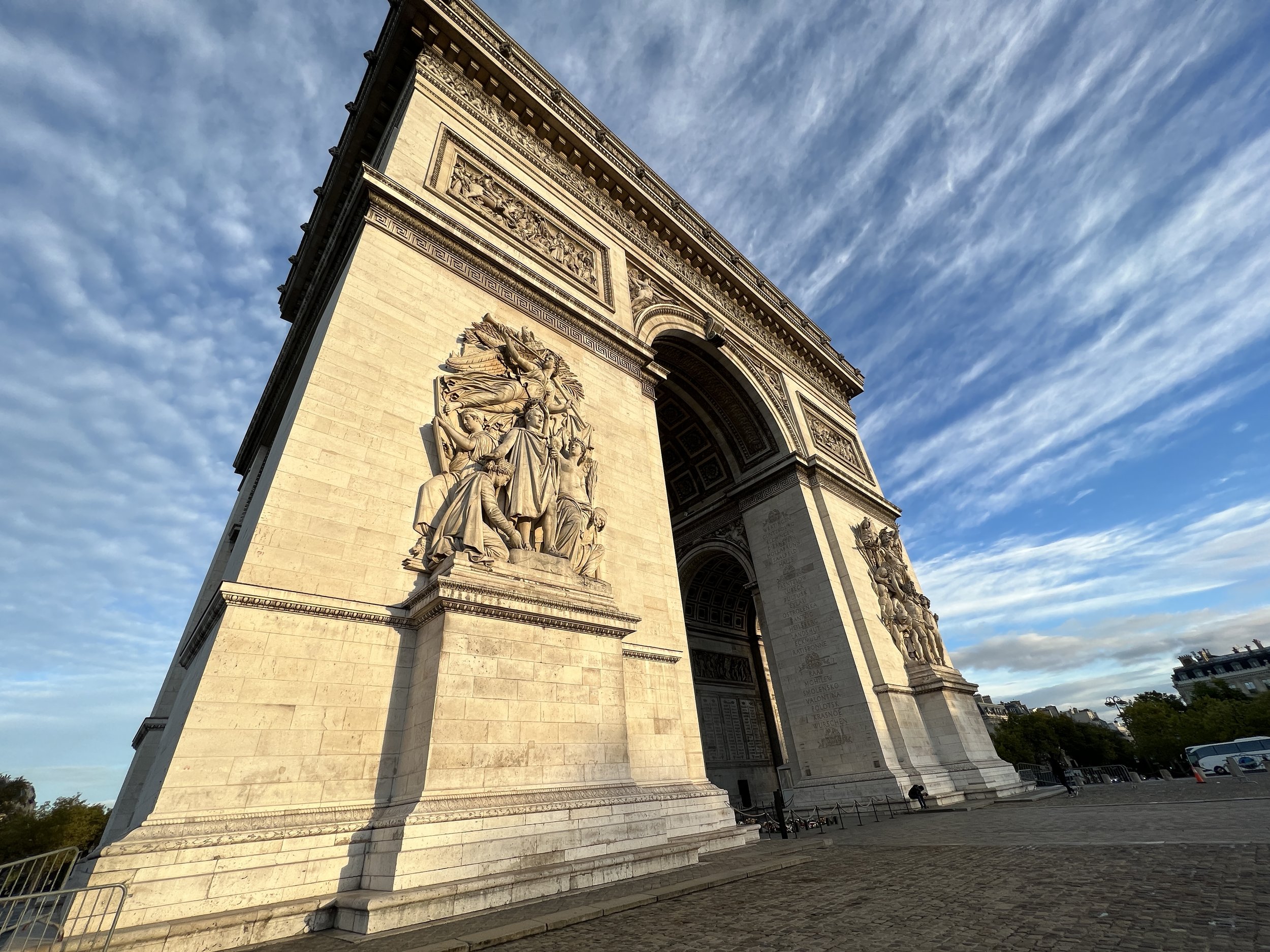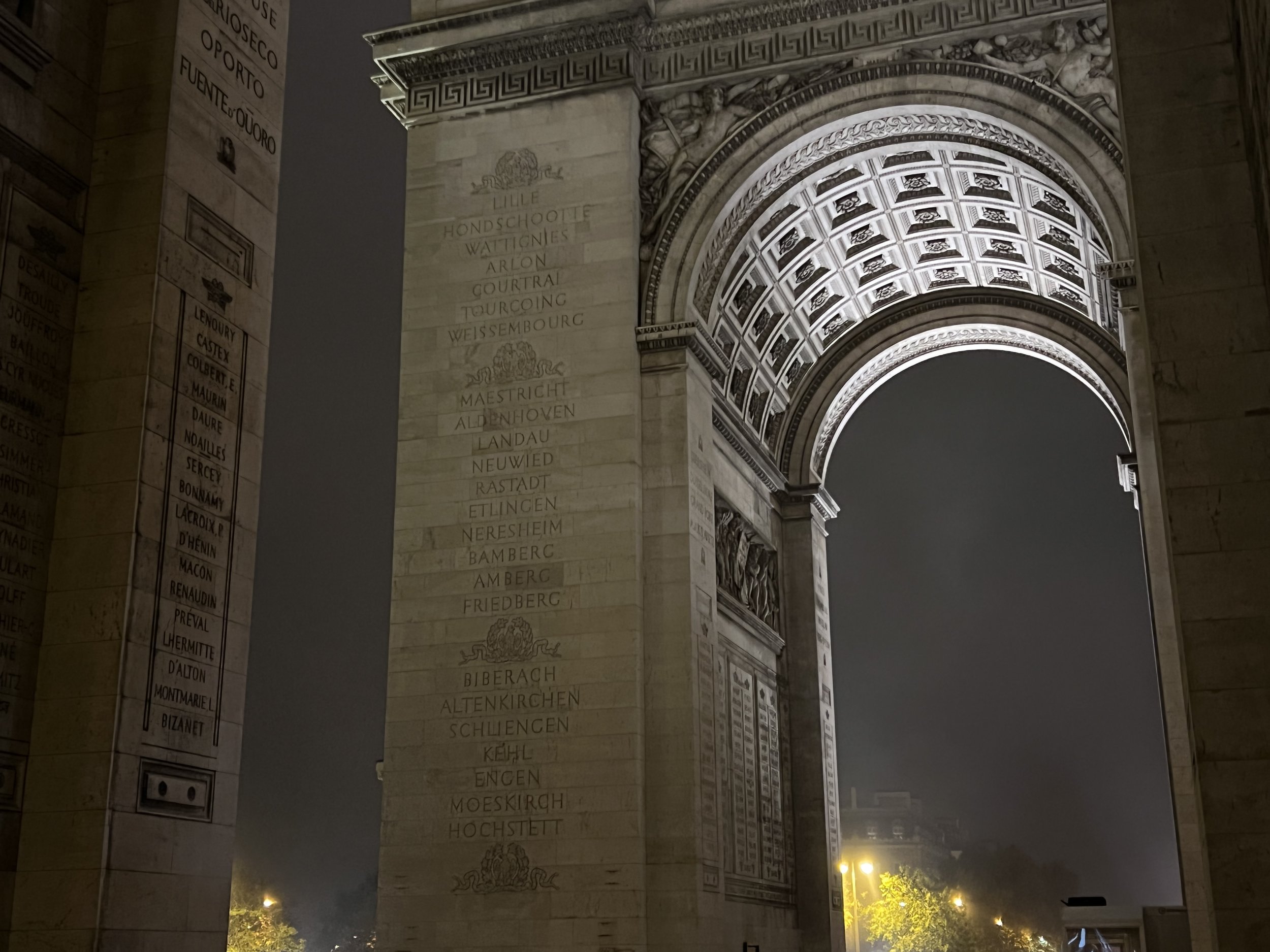Latest Updates and Travel
Remembering June 6, 1944
On the evening of June 6, 1944, 16 Officers and 321 enlisted men of the 319th Glider Field Artillery Battalion glided into Normandy, France, as part of Mission Elmira. Departing from the Membury Airdome in southern England, Serial 32 - 436th Tug Group, composed of 48 Horsa and 2 CG-4A gliders also carried the 320th Glider Field Artillery, 307th Airborne Medical Company, Co A 307th Airborne Engineer Battalion and 82nd Airborne Division Artillery. Landing Zone “W” was the mission. Captain Andrew Hawkins, Sgt. Thomas Sample, Lt. Marvin Ragland, Chaplain William Reid and others, were attached to 82nd Airborne Infantry units and parachuted into Normandy.
Landing in a wide area 1 to 2 miles north of Sainte-Mère-Église, France at 2255 hours, the 319th glider soldiers forged their place in the largest amphibious invasion in the history of warfare.
The 319th landed in the German front lines which resulted in 2 officers and 15 enlisted men killed, 6 officers and 86 enlisted men wounded upon landing. By 0500 hours on June 7, 1944 and the balance of the day the 319th salvaged equipment, evacuated wounded and reorganized the battalion despite being cut off from the division.
On June 8, 1944, the 319th moved to the vicinity of Chef du Pont, France. The battalion started firing at 1715 hours with one battery of seven howitzers, one of which was attached from the 456th Parachute Field Artillery Battalion. The other howitzers had been damaged and left at the glider landing area.
“God Bless these heroes”
Memorial Day 2025
*****************************
Remembering all of our veterans and especially the fallen heroes of the 319th Glider Field Artillery Battalion this Memorial Day
December 2024
Hello to all the soldier families and friends. Hope you had a great Christmas and a Happy New Year for 2025.
Below you will find a link to a video we produced. It will summarize the 2024 updates and other activities. Click on play and the video will begin playing, the run time is about 36 minutes. I hope you enjoy the information and memories.
The following video from France News Channel 3 covers the 80th D-Day anniversary visit to the Airborne Museum in Ste. Mere Eglise, France, to view the new WW2 Glider exhibit. The audio is in mostly in French and hope you enjoy. Click on play and the audio/video will begin playing. The run time is about 4 minutes.
October 2023
*******************
Hello again to all the 319th families and friends. I hope you enjoy this latest update. Please remember when you scroll further down the page prior updates and information are posted.
If you no longer care to receive this update please let me know and I will unsubscribe your email address.
What’s new? .. a lot.
New archive records
We've recently acquired additional archived records through collaboration with researchers at College Park, Maryland, and St. Louis, Missouri. These records shed light on critical military campaigns and unit histories, particularly the 319th’s Italy Campaign, Operation Neptune and Central Europe. Specifically, unit journals and after action reports. These records can be viewed in the campaigns section drop down menu.
Fire damaged archive file
Individual personnel files and the fire
The individual personnel files of World War II soldiers from the 319th were archived in a government facility located in St. Louis, Missouri. Regrettably, a fire incident resulted in the reported loss of the majority of these files. However, recent research revealed that approximately 10 to 15% of these files managed to survive the fire. (see inset photo)
500 soldiers
To date, I have submitted requests for the files of over 500 soldiers who served in the A, B, HQ and Medical Batteries of the 319th soldiers from 1942 through the end of the war. We have received more than 250 of these files so far. While some files are relatively brief others, like one particular example, contain almost 300 pages of documentation. Many of these pages show signs of damage, including burnt edges and evidence of exposure to smoke or water. Nevertheless, they remain legible.
Key documents
The personnel files included key documents such as active duty records, physical exams, immunization records, fingerprints, and hospital records. Some files detailed arrival and departure locations, and others had battle casualty reports. They all contained pay records and evidence of glider training. A few had disciplinary records, and most had records of service with decorations or medals. These files also included training records covering various aspects of army training, indoctrination, morality lectures, and separation conduct. Interestingly, some had copies of telegrams sent to families reporting injuries or missing soldiers, many had honorable discharge records.
"Reconstructed file"
I also uncovered what is known as a "reconstructed file" within the archive. This term refers to files that were created after the war when soldiers contacted the army to request information about their service. For instance, they might have inquired about obtaining an honorable discharge certificate or determining their eligibility for a specific medal or commendation. During such inquiries, a new or reconstructed file was generated. To create this file, the soldier would have had to provide proof of their identity and service, often through mailing in personal information. This documentation, along with any materials sent to the soldier at the time of their inquiry, fortunately were stored separately from the files destroyed in the fire.
Text or email me and I will send my archive findings to any soldier family interested in the documents, at no cost to the family.
More new stuff
Earlier this year I visited Fort Bragg, now Fort Liberty, the home of the 82nd Airborne, located in Fayetteville, North Carolina. This was my first visit to the Fort and given the opportunity I would recommend you visit there as well.
It is an amazing place and home to the proudest 50,000 soldiers you ever met. I was invited by Lieutenant Colonel Niels Hansen, a modern-day 319th soldier and outstanding individual. A shout out to Greg Sebring, son of A- Battery Sergeant Mahlon Sebring, who connected me with the lieutenant colonel.
I was given a thorough tour of the Fort. To name a few sites; the 82nd Airborne museum-related stores, the airborne archives, World War II era barracks, and nearby Camp Mackall where the 319th glider troops trained before they were deployed to North Africa in May 1943.
(See below slideshow - arrows to click left/right)

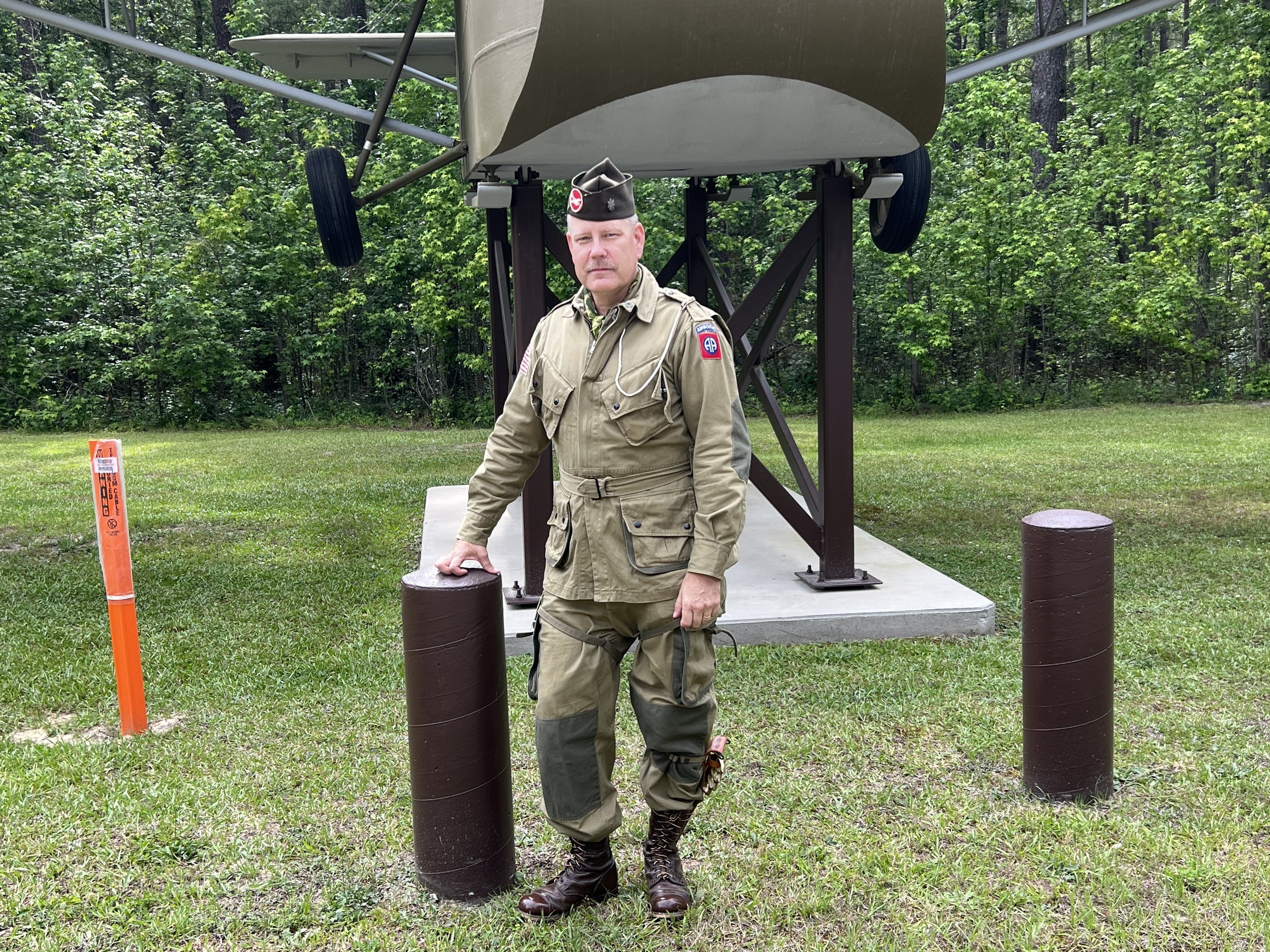
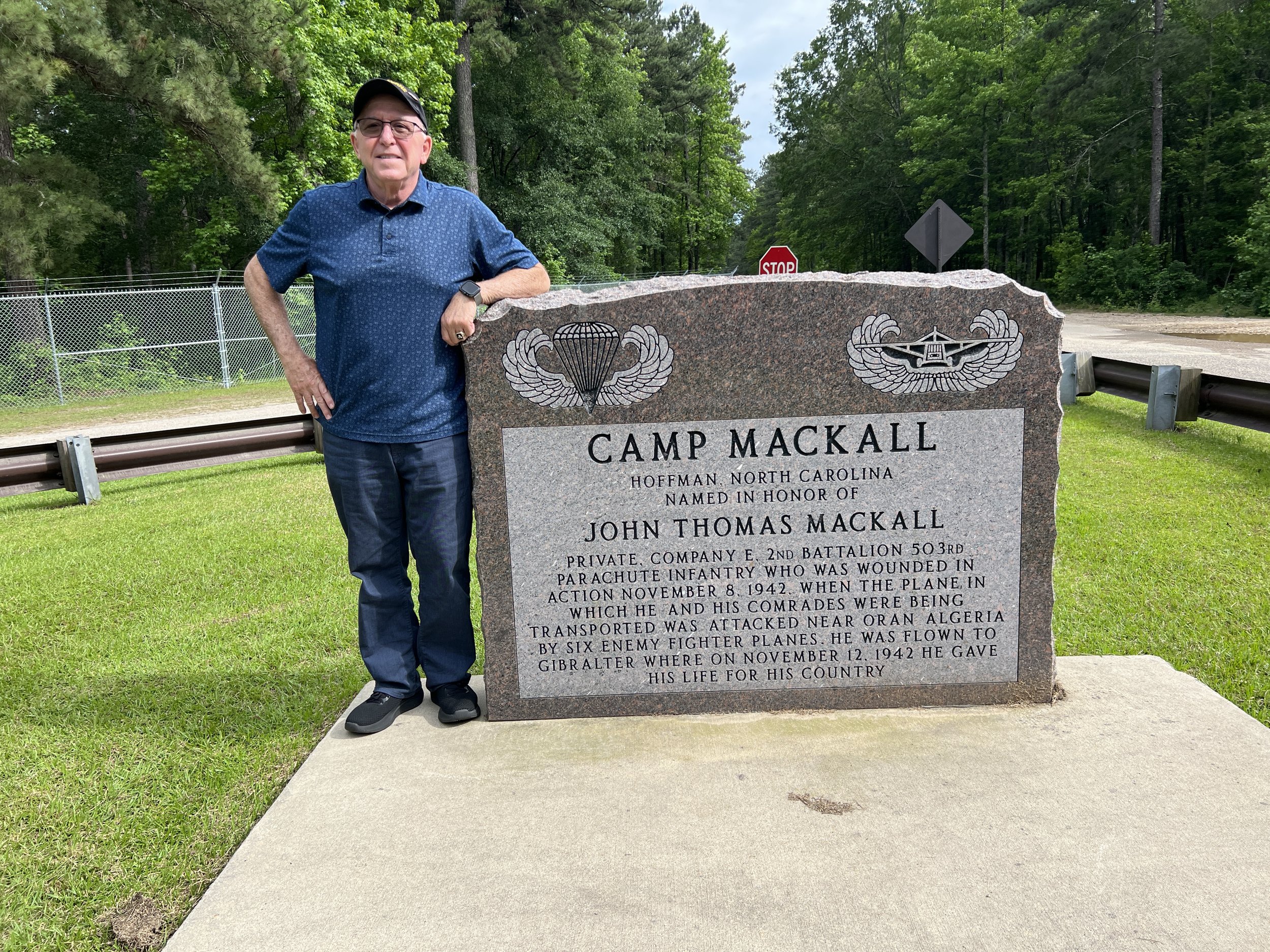
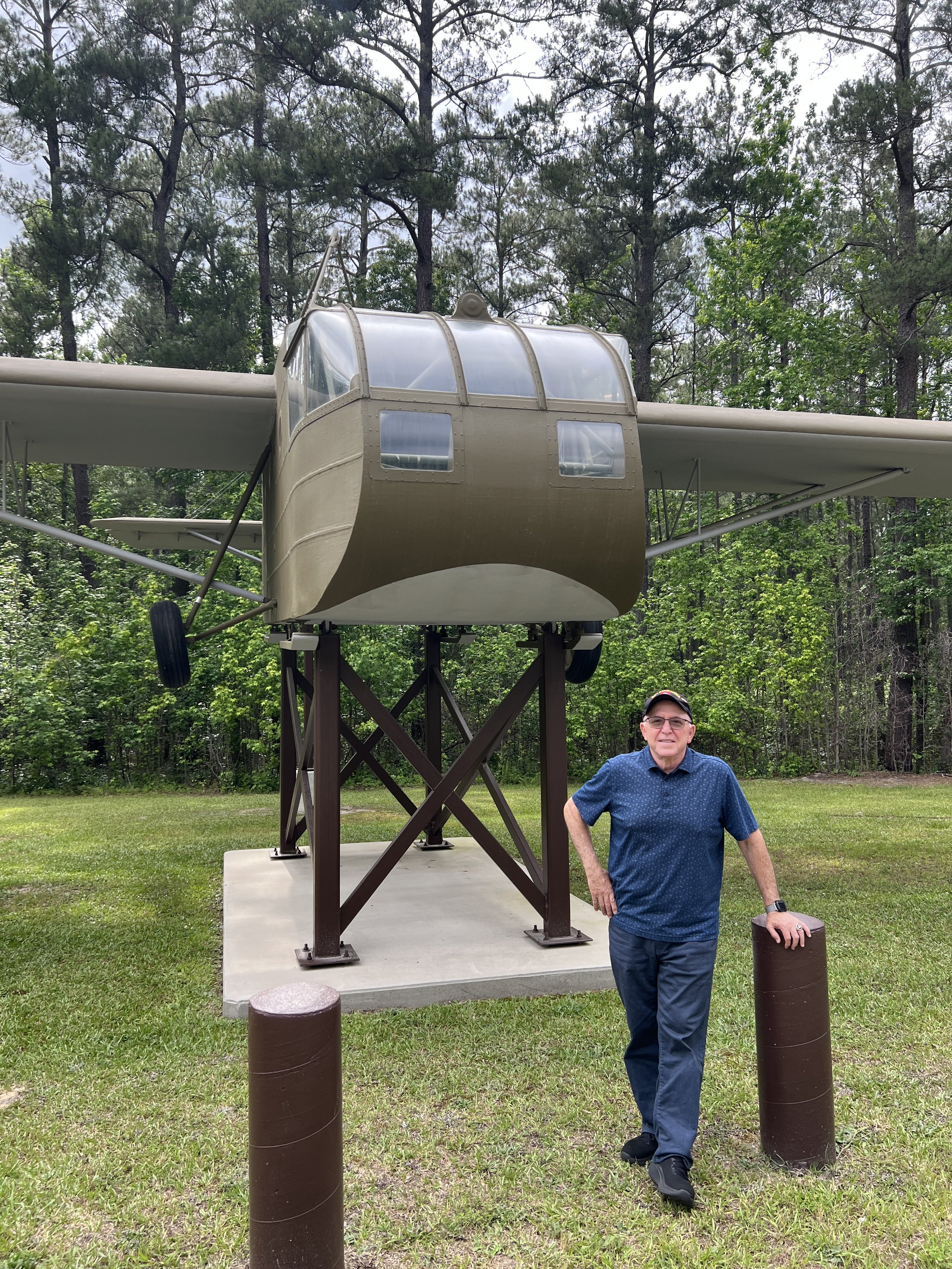
On display behind the airborne Museum I saw various World War II era aircraft, for example, a C-47, and a Vietnam era transport plane. There are also several helicopters and artillery pieces. I was able to go inside the C-47 and sat in the co-pilot seat which was very cool to say the least.
(See below slideshow - arrows to click left/right)
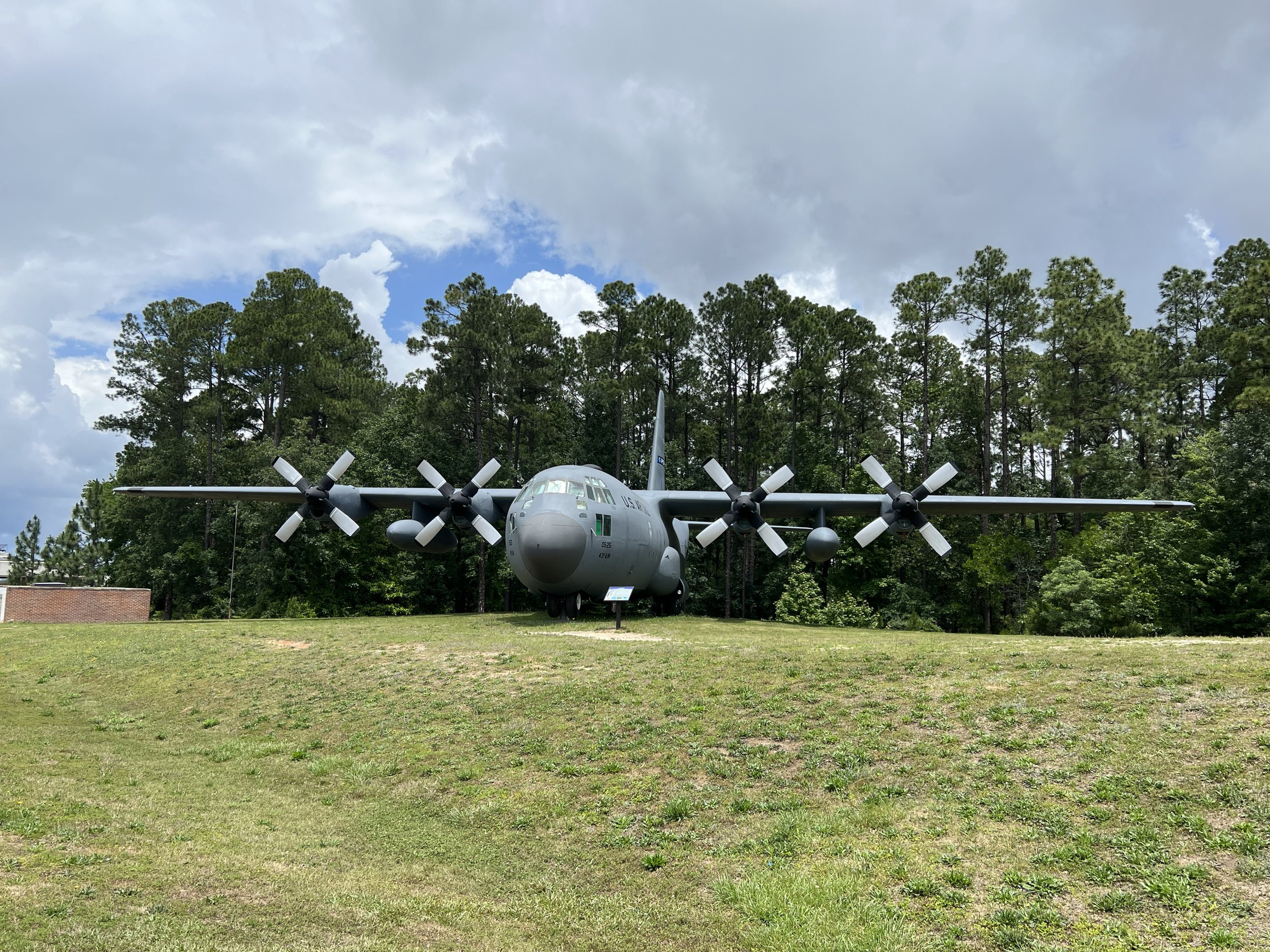
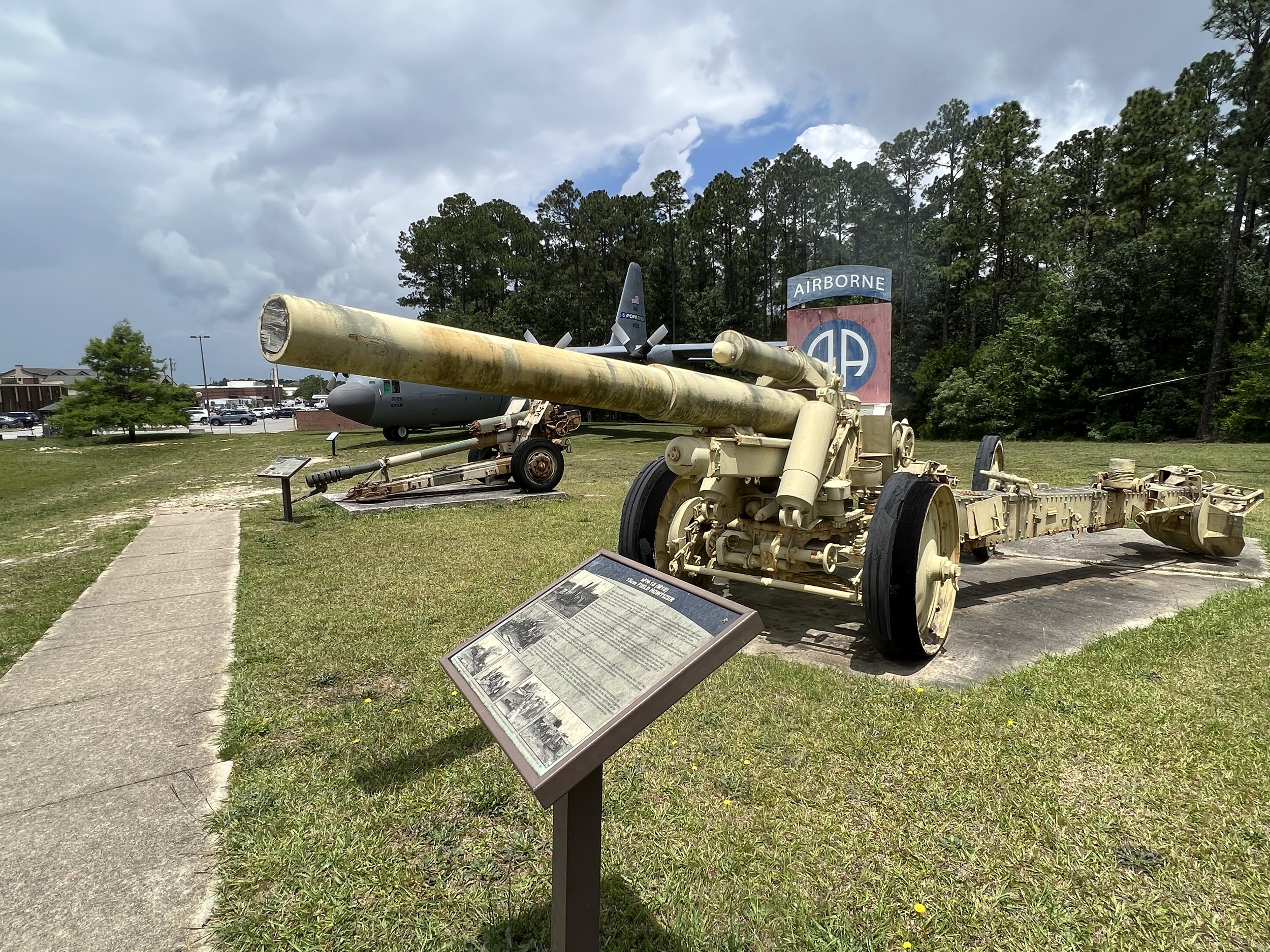
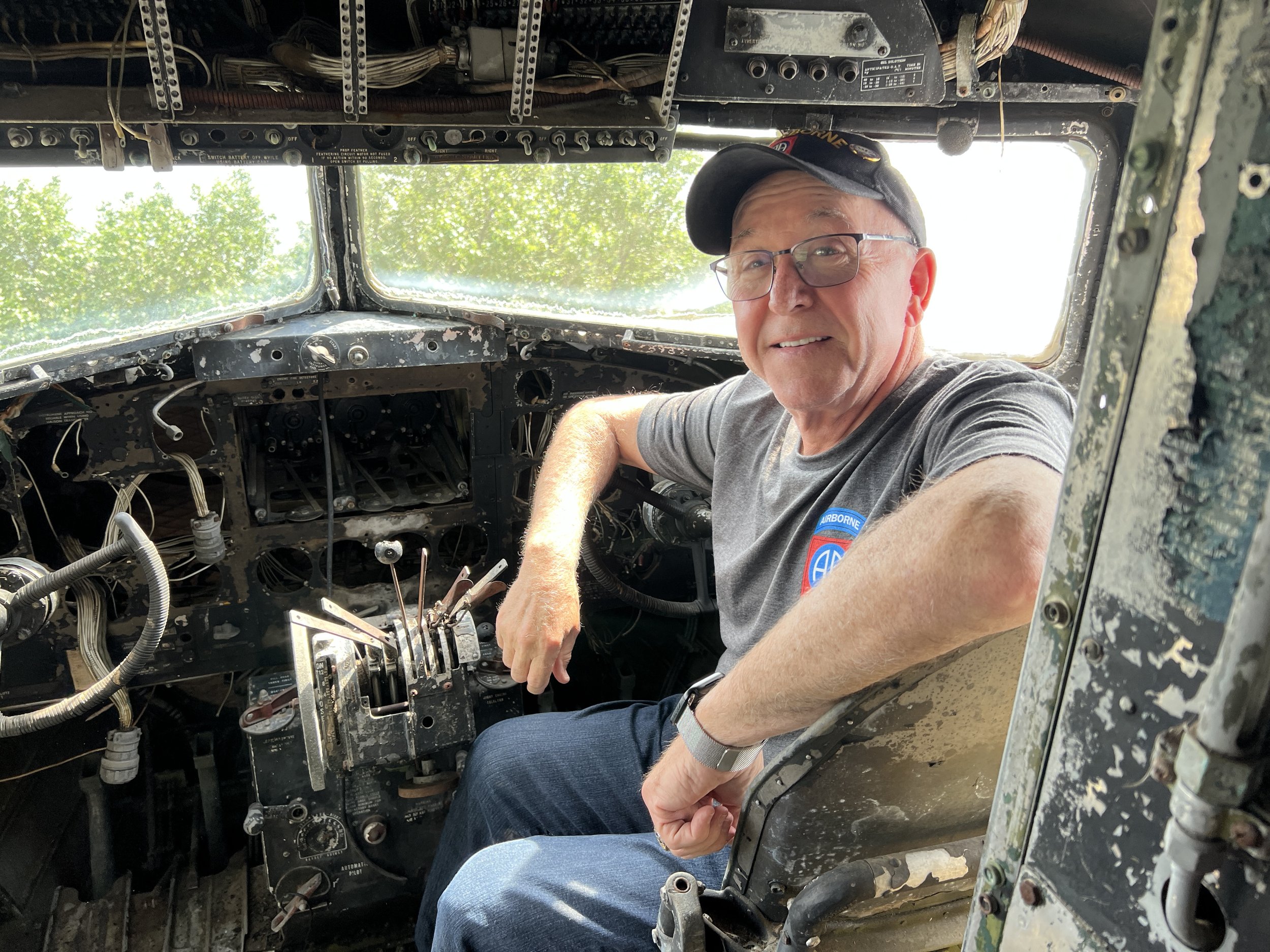
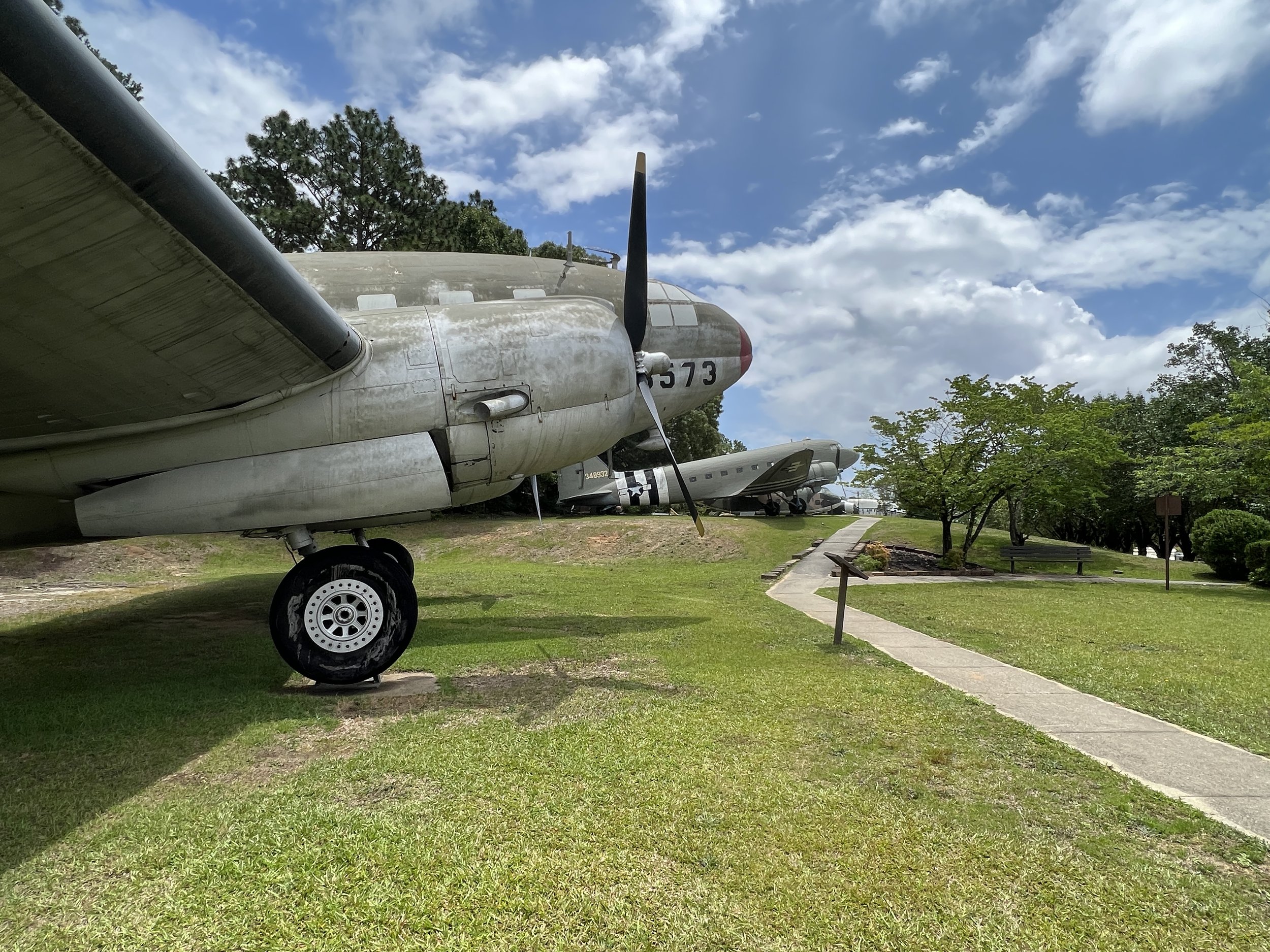
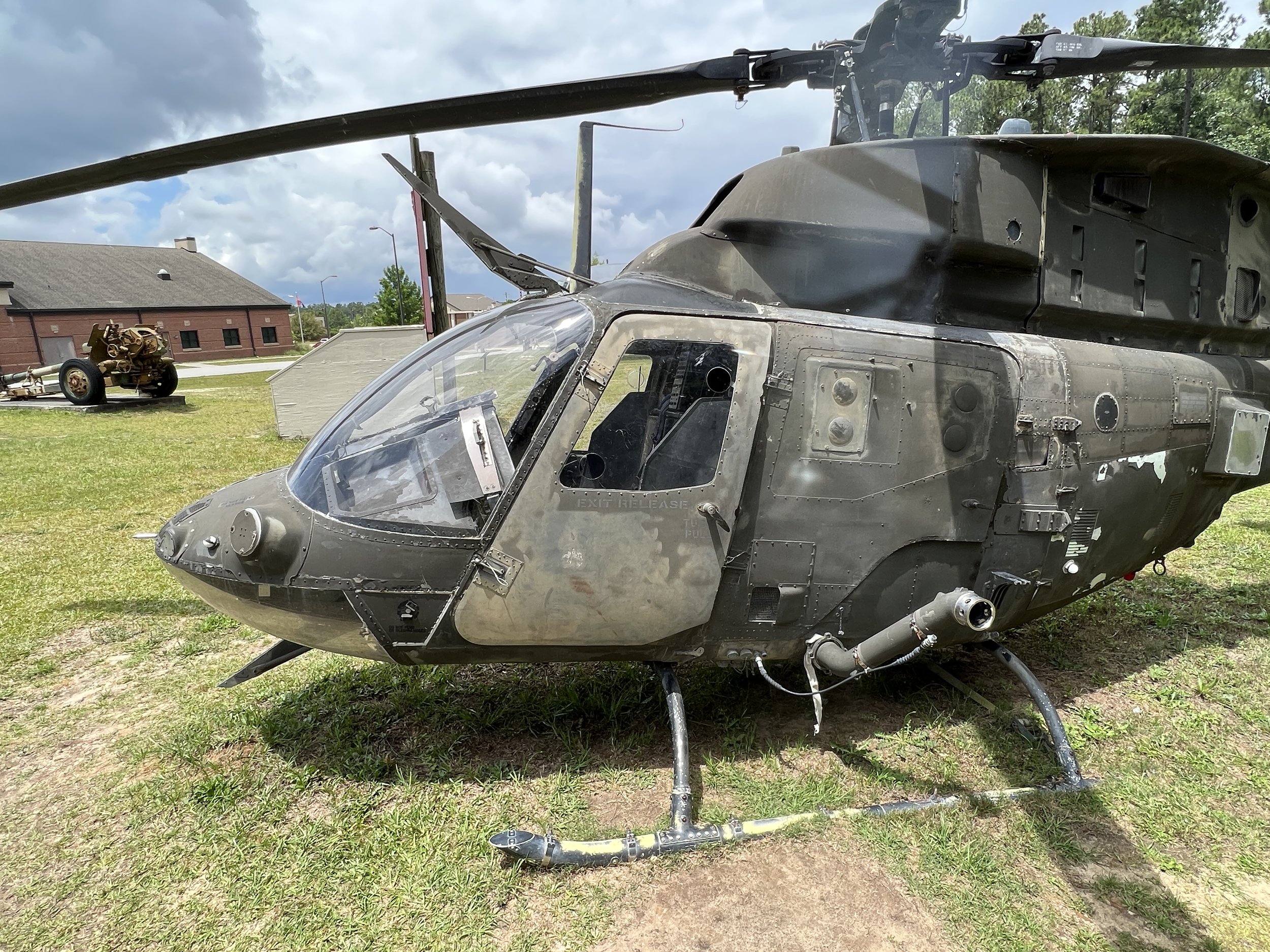
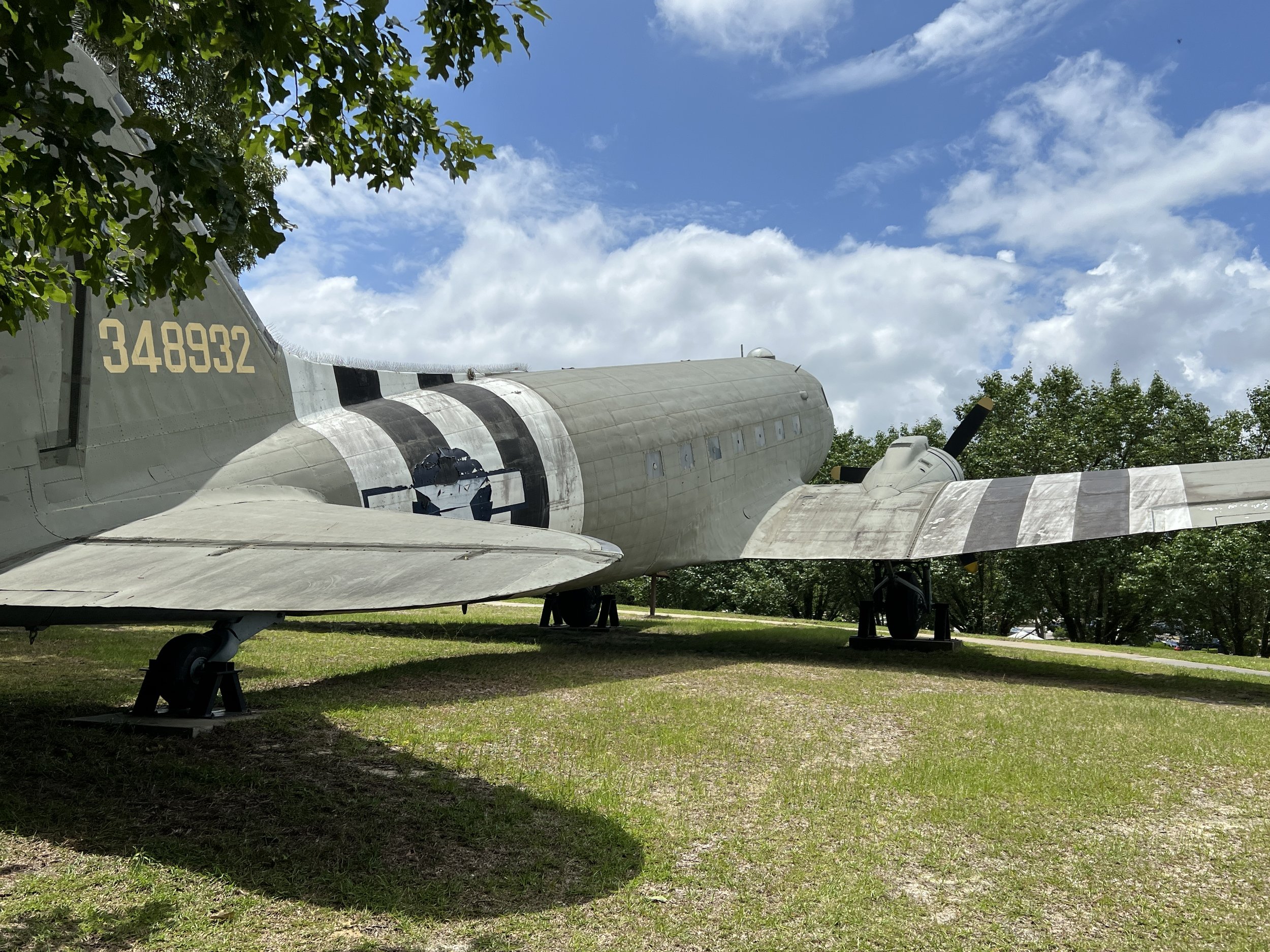
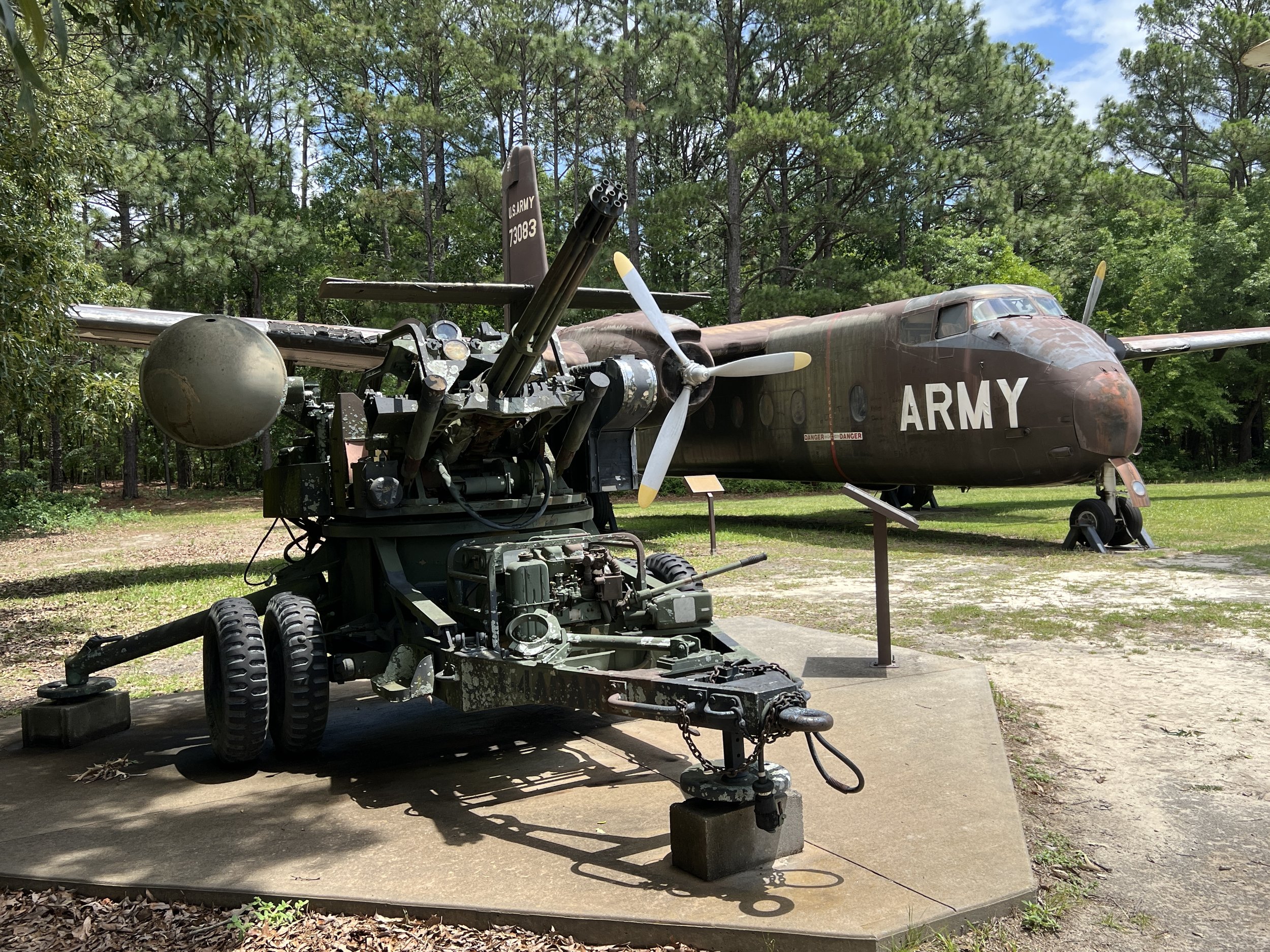
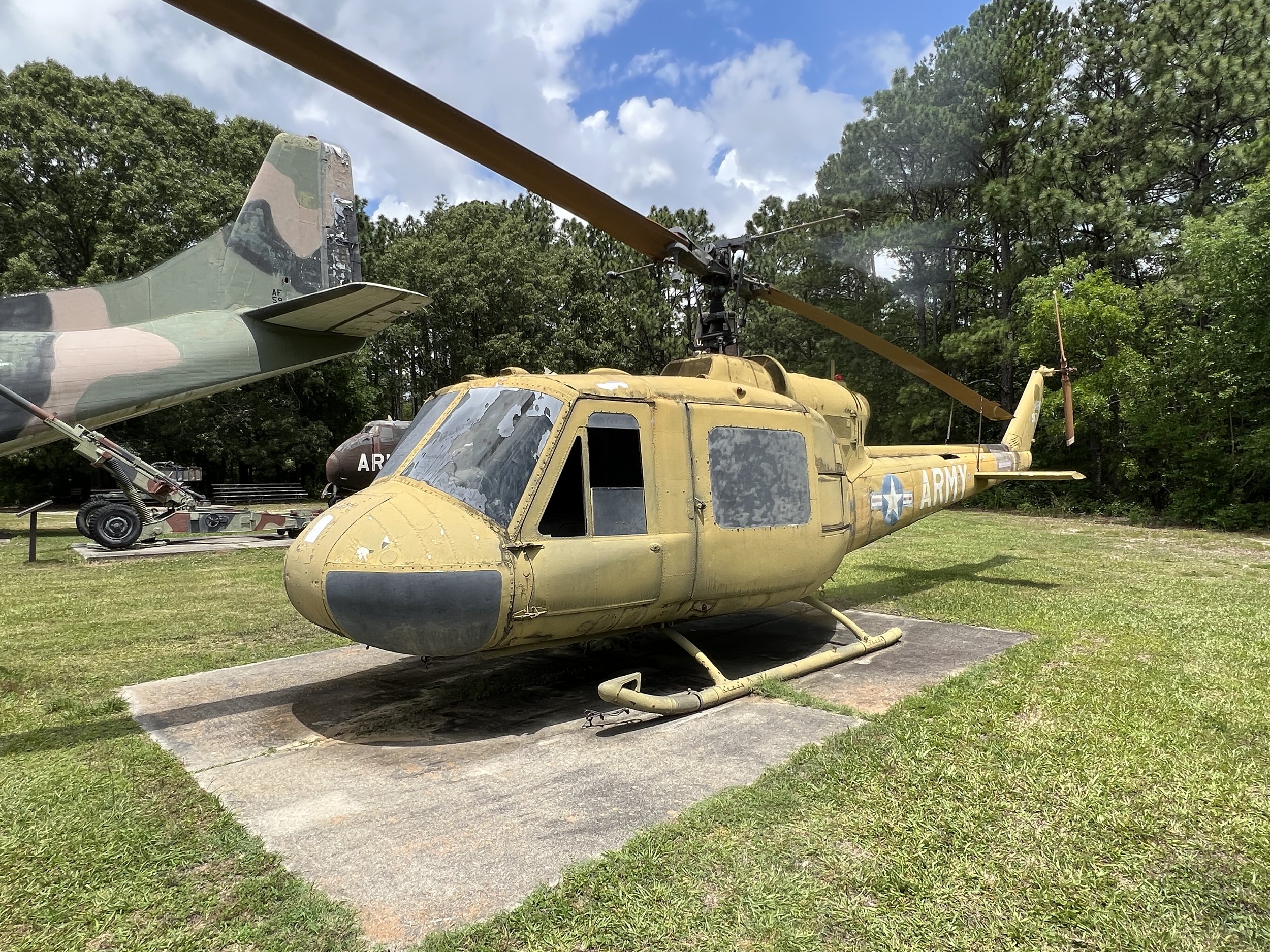
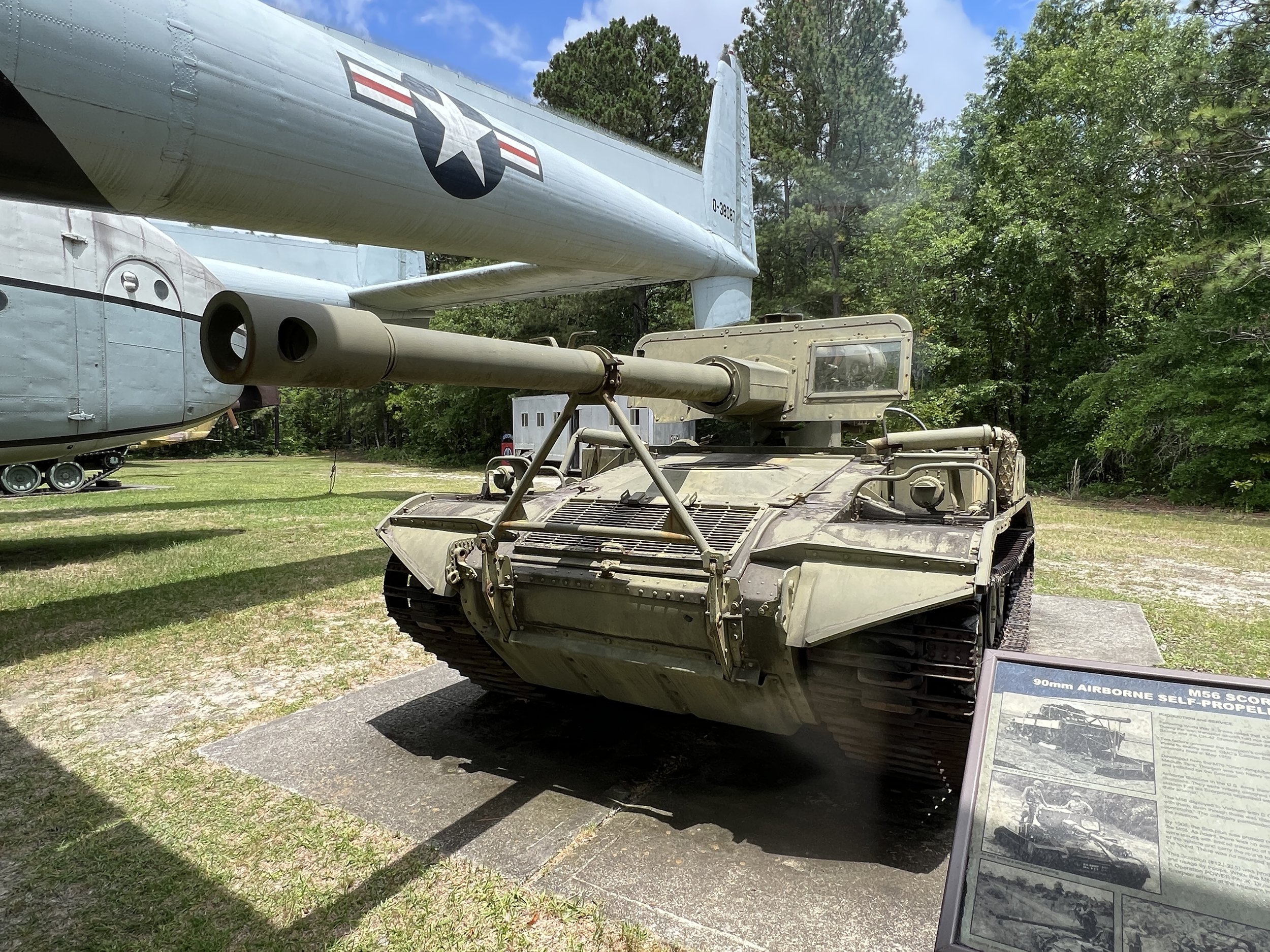
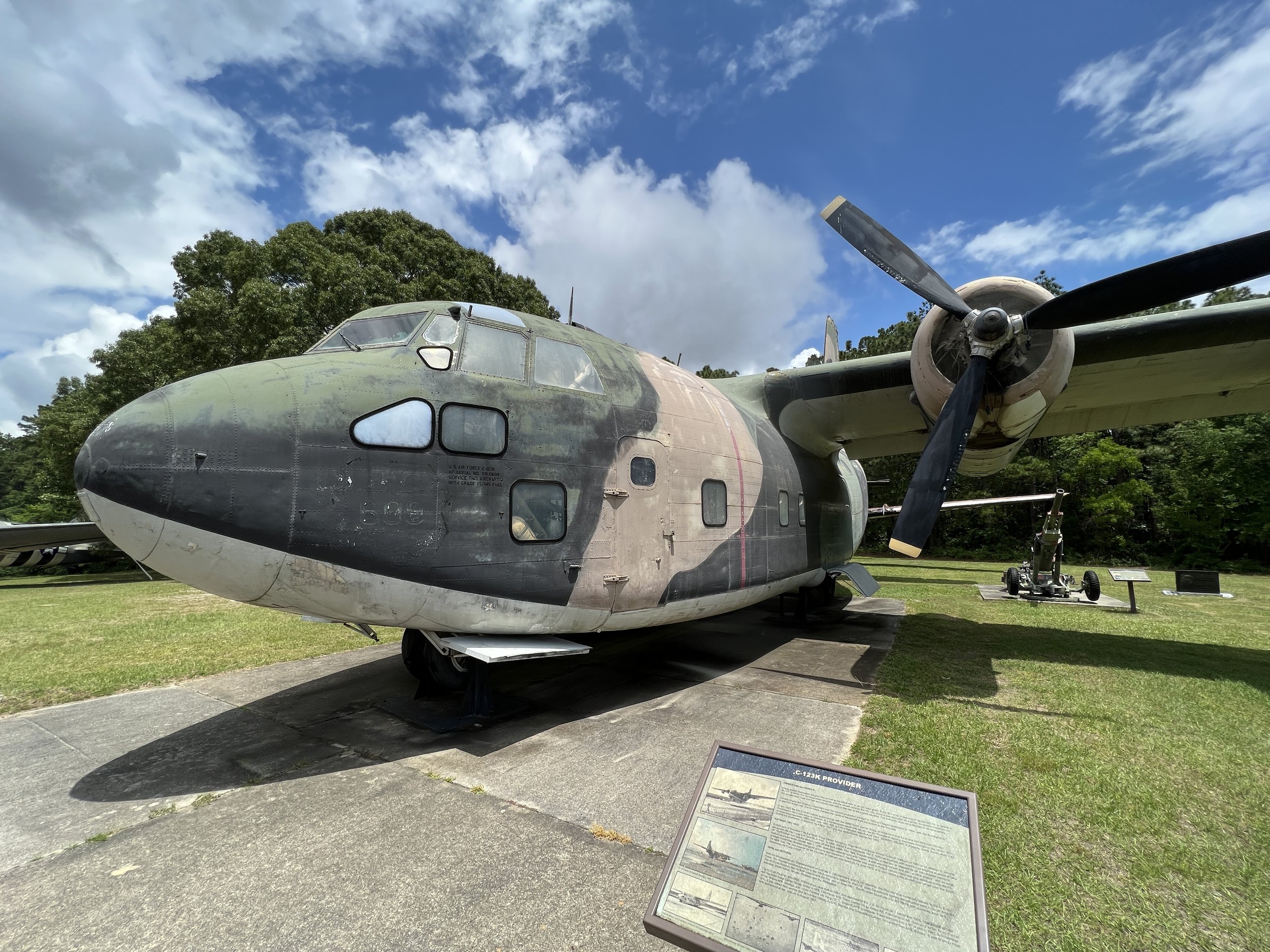
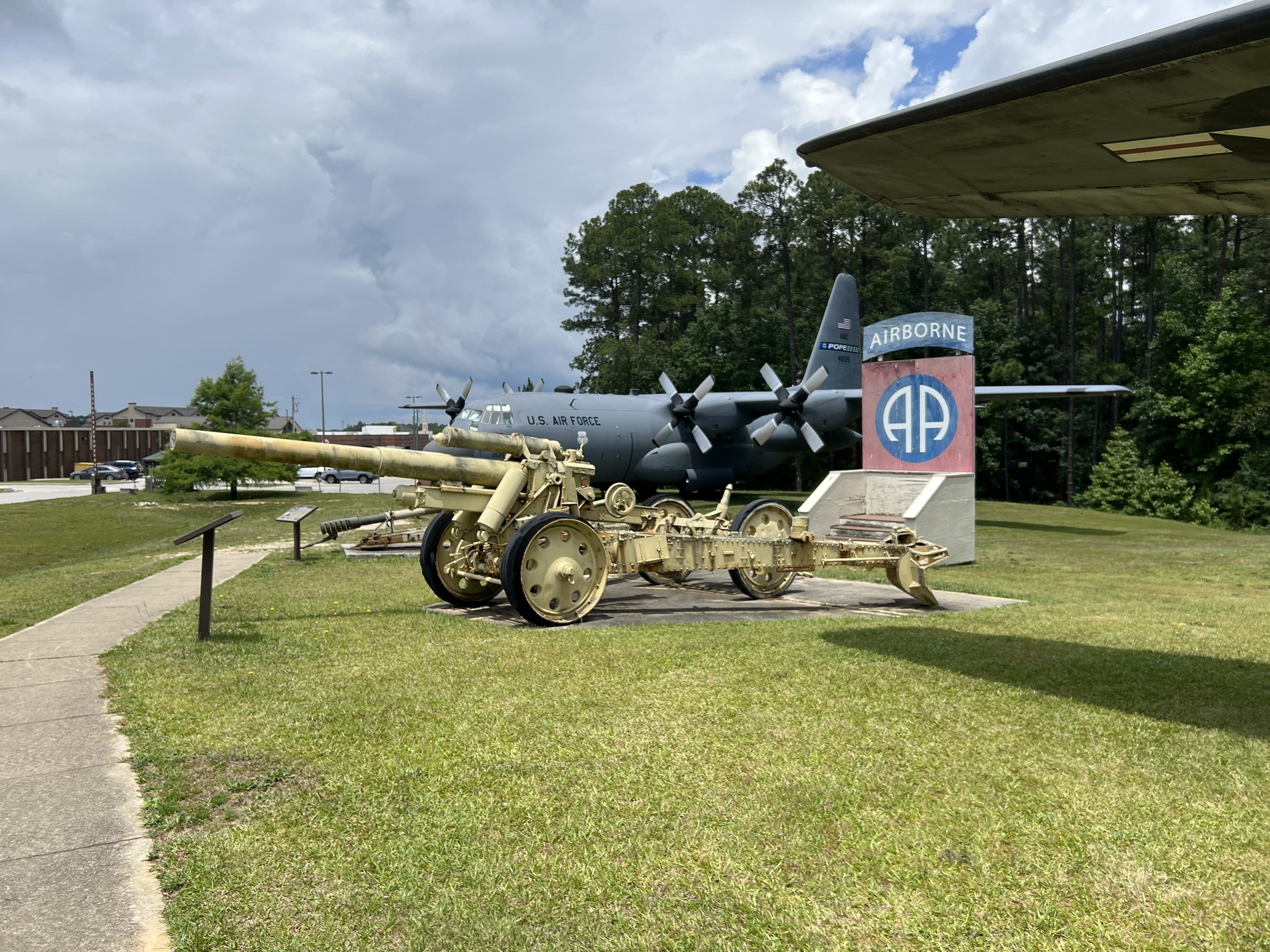

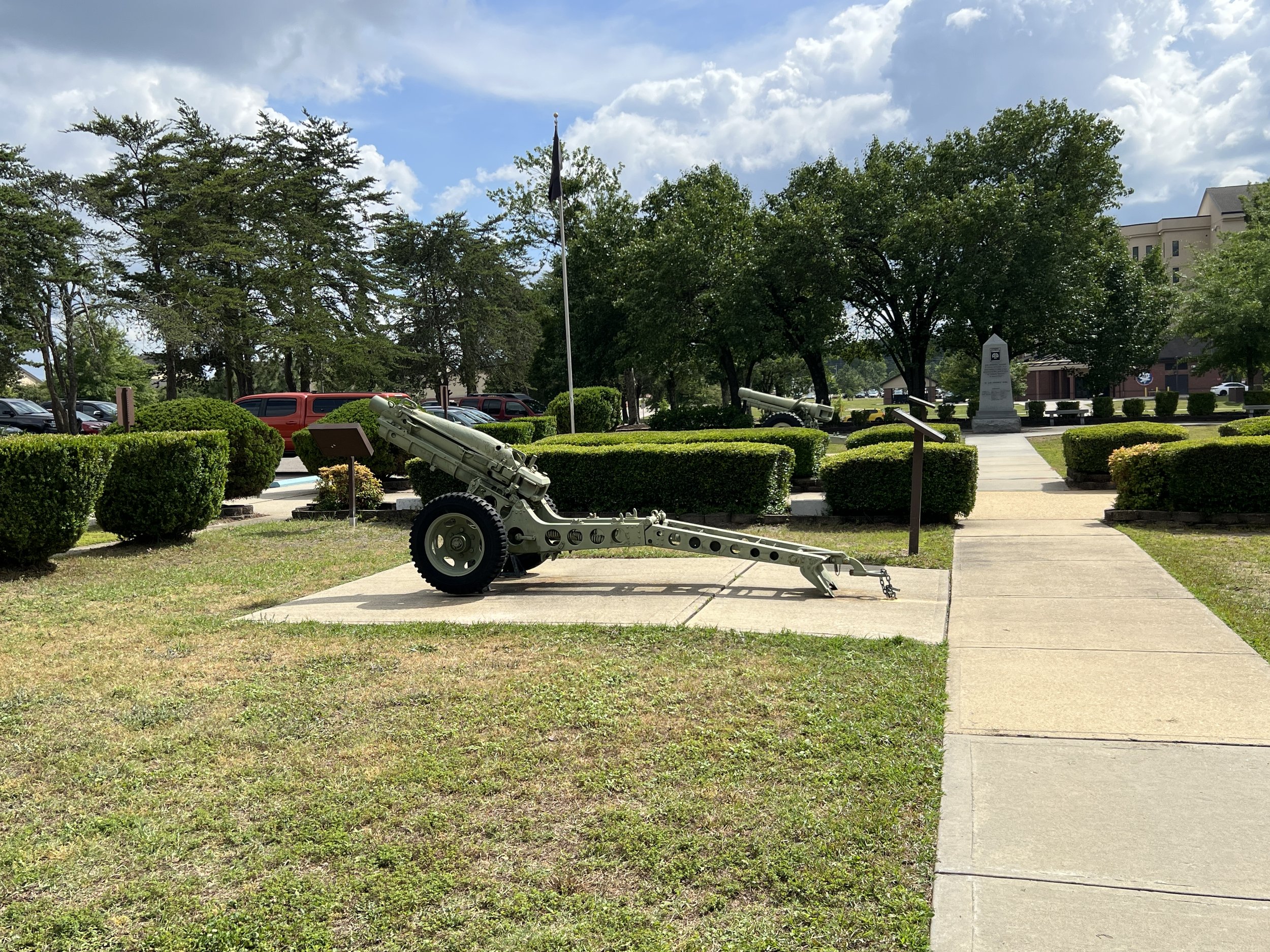

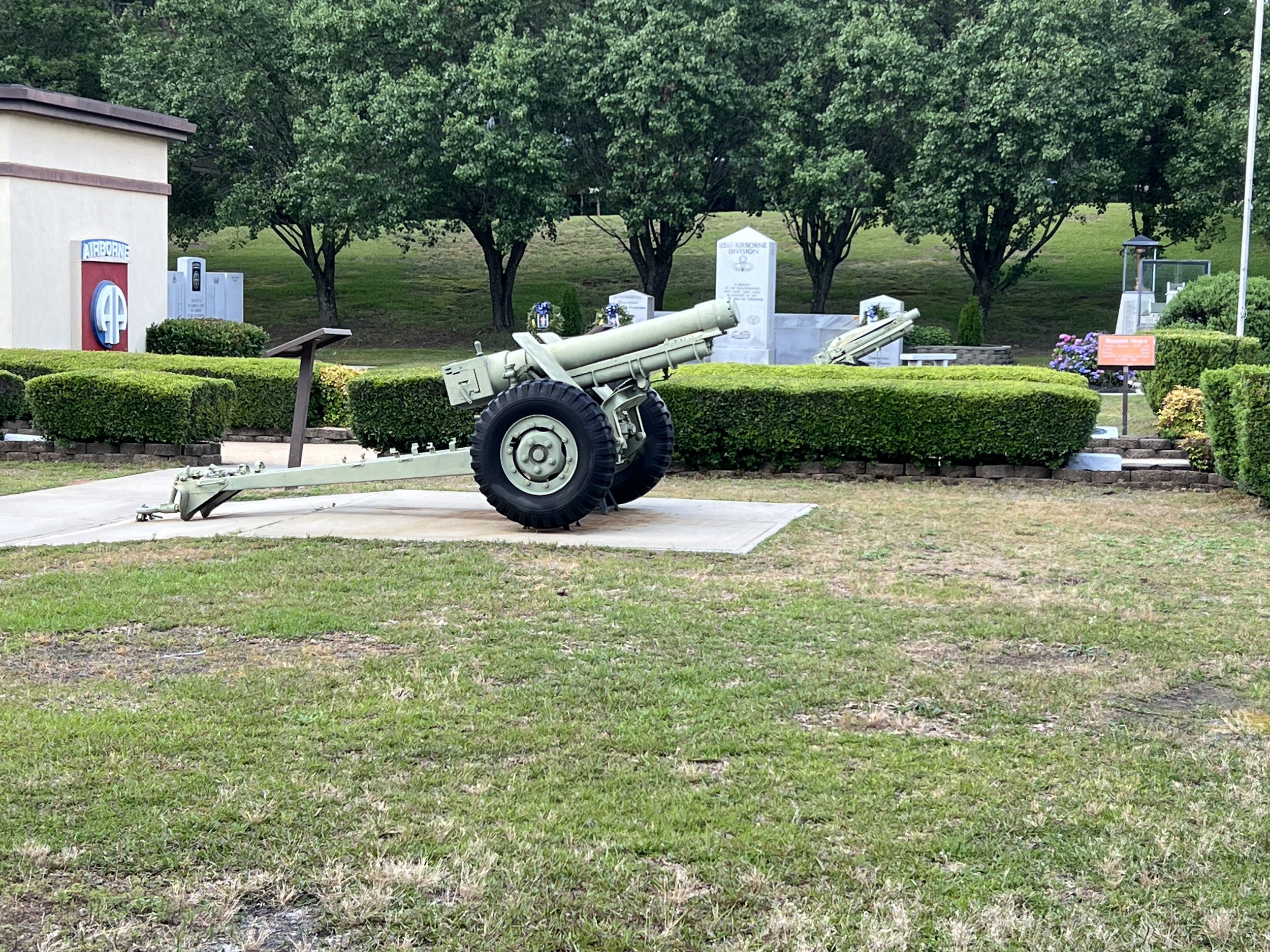
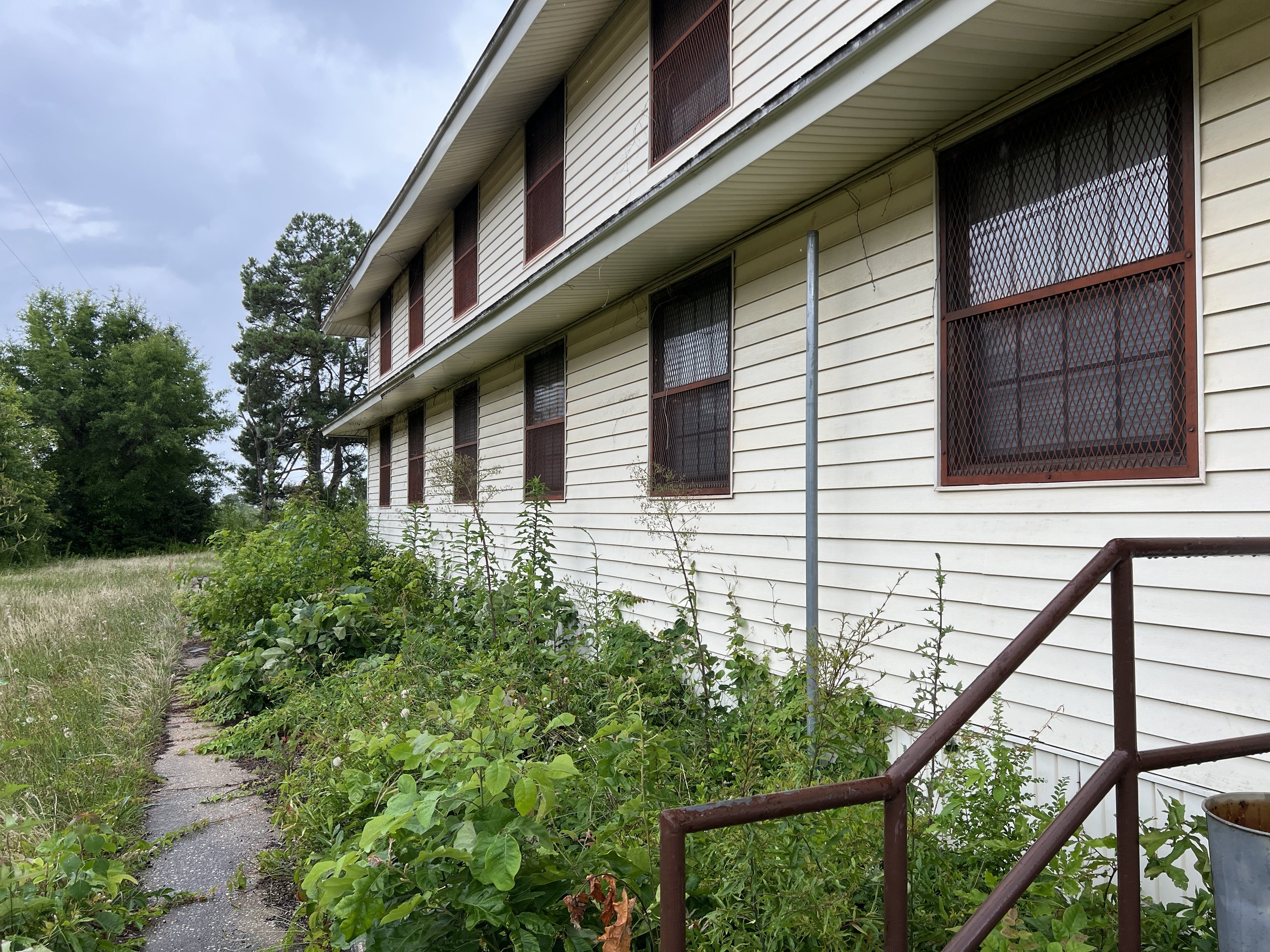
During the week I was there, coincidentally, the fort was transforming to its new identity as Fort Liberty. All of the soldiers I met handled this task quite professionally, as you would expect from the 82nd Airborne.
I attended a “sunset liberty walk” to commemorate the occasion where some soldiers wore World War II era uniforms, and heard the commanding officer explain the process of how they arrived at the new name of Fort Liberty. The occasion ended with a long salute, a few moments of silence, then we walked back to the starting point of the event.
(See below slideshow - arrows to click left/right)
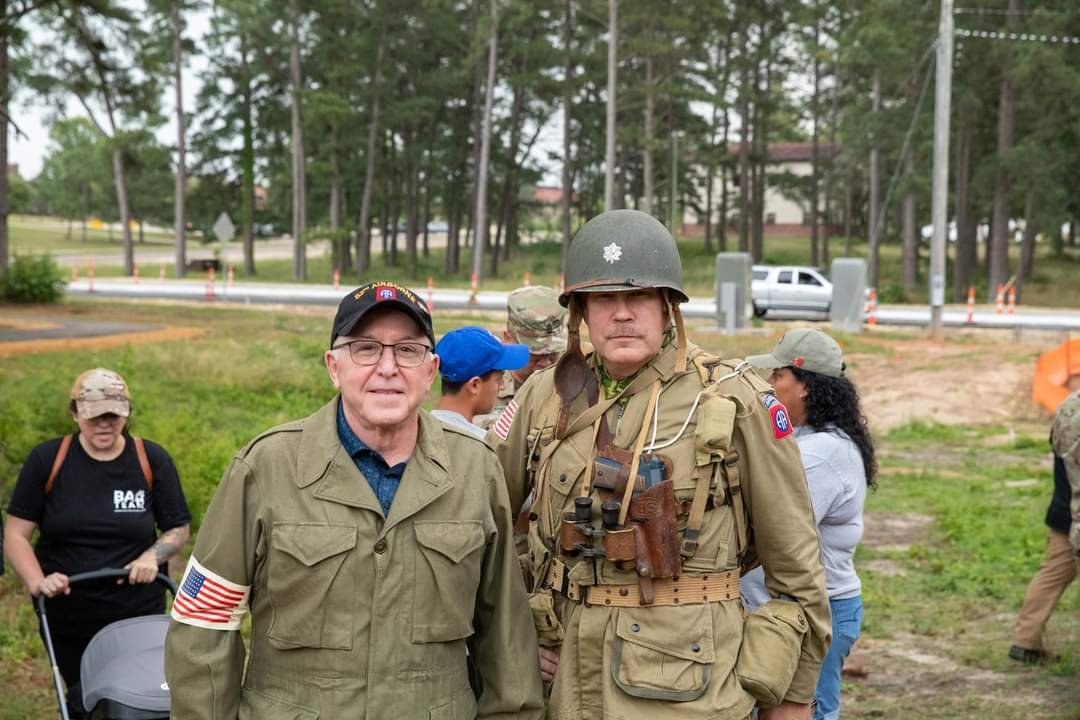
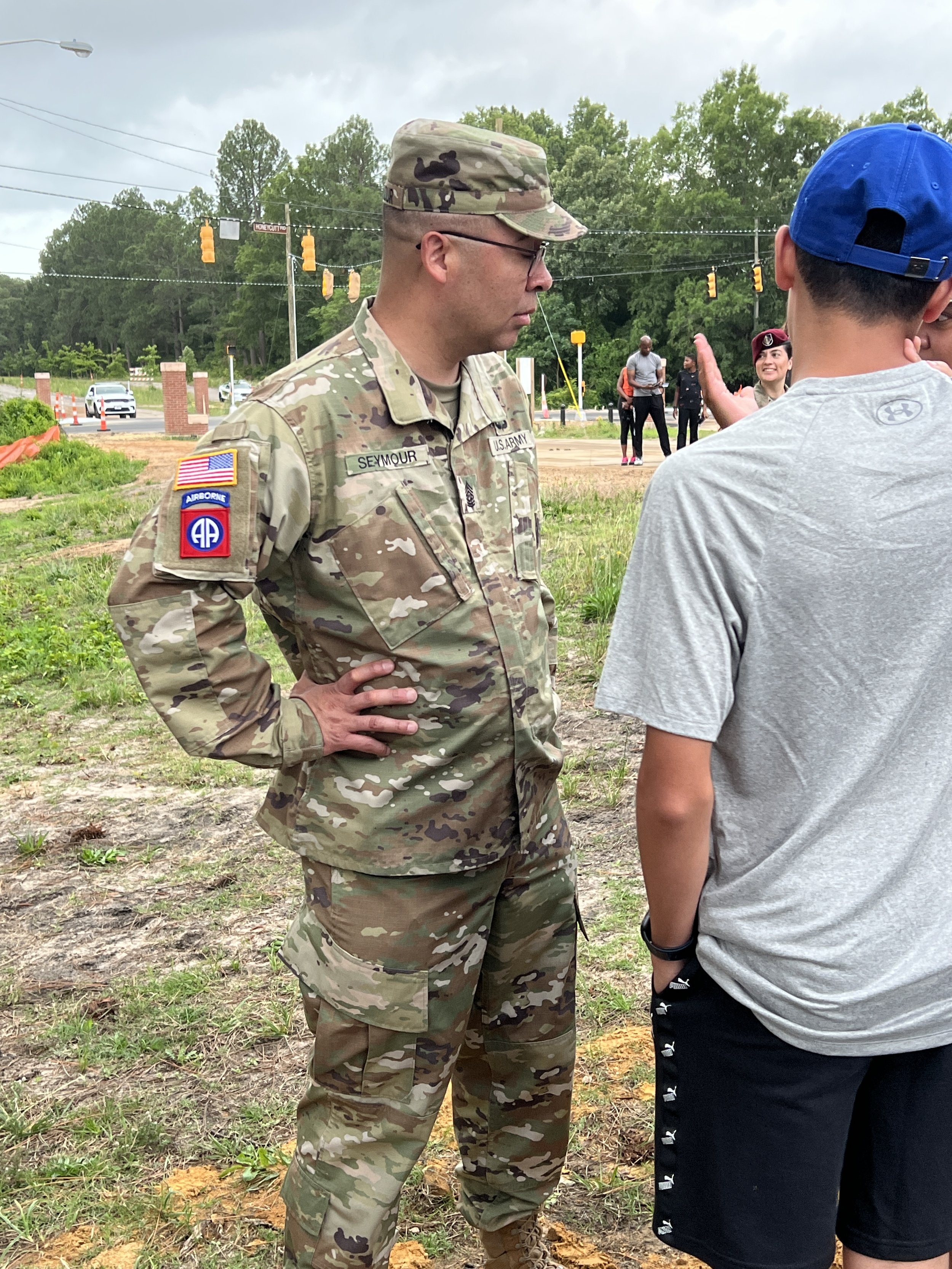
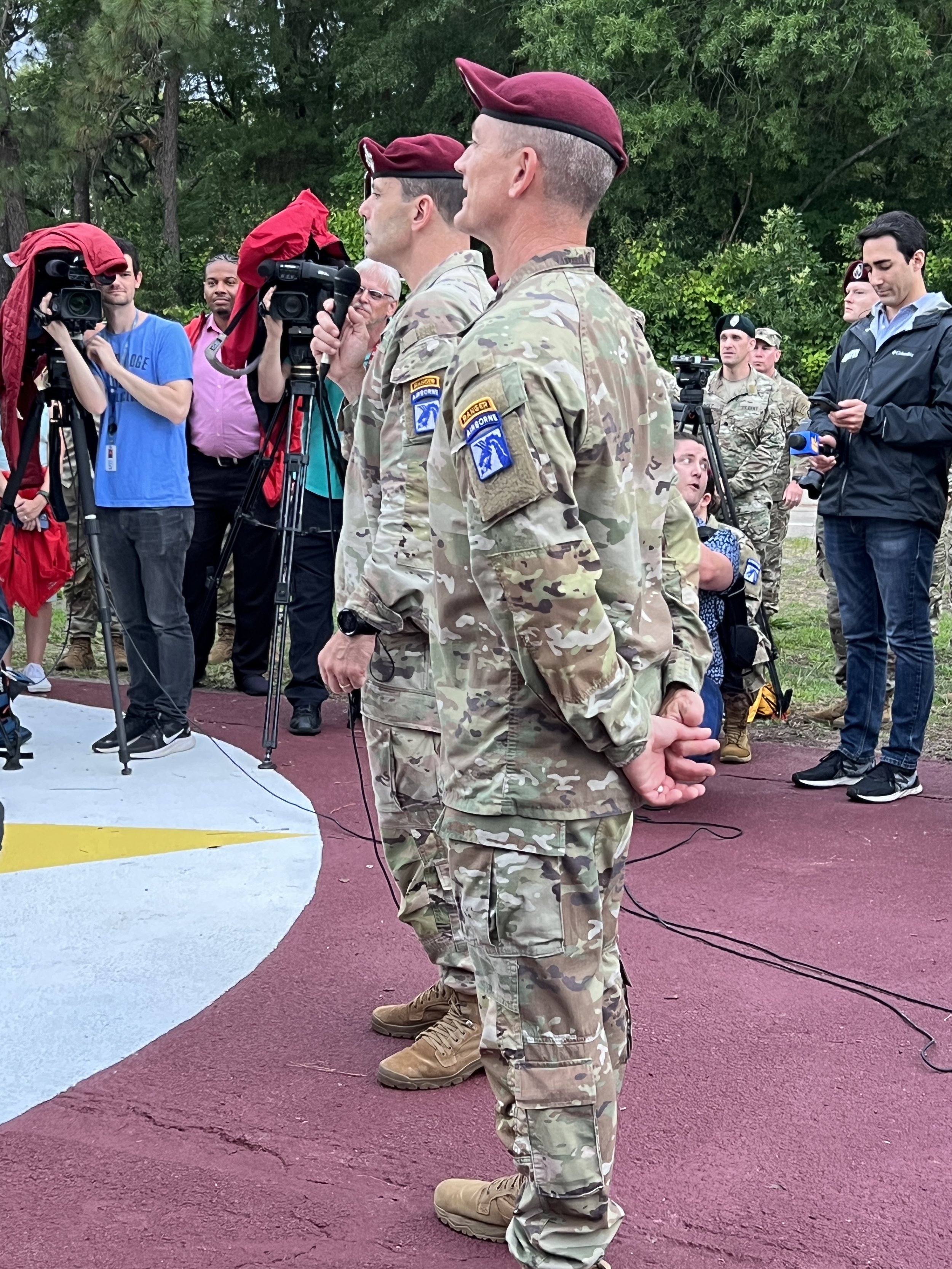
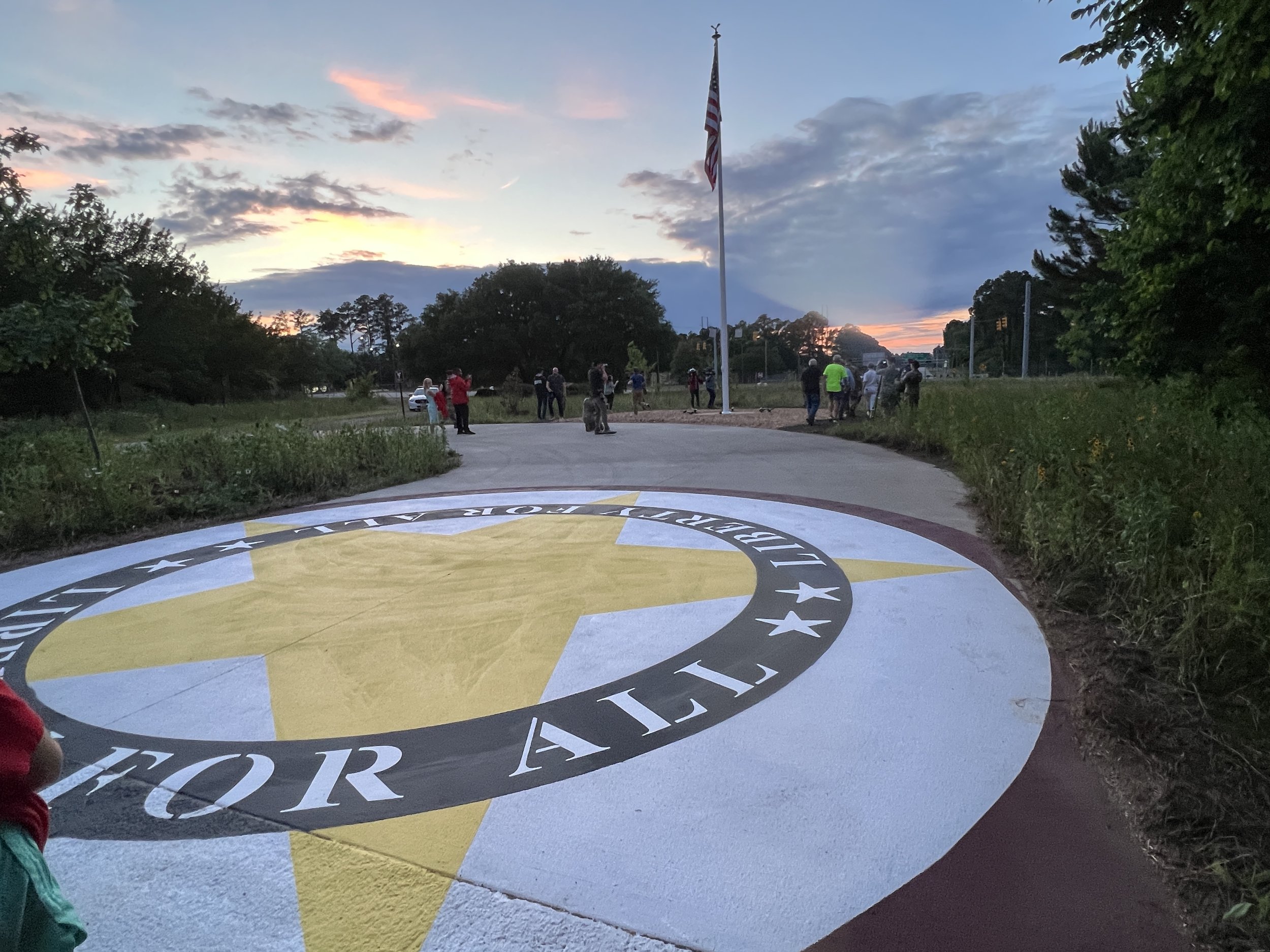

The 319th archives
While visiting Fort Bragg over last memorial day weekend, I had the opportunity to review all the records in the archive relating to the 319th Glider Field Artillery during World War II.
The archive room is located in an area behind guarded doors in the same building as the airborne museum. I must say the staff were unbelievably helpful and I can't thank them enough for the opportunity to be there.
The archives are very squared away, everything has its place and is in place. I was able to locate many relevant pieces of information and photographs which will enhance the history of the 319gliderman.com website. I spent three days in the archive room reviewing files and images that were preserved in protective binders and sleeves.
I would like to tell you about one of the many items I located, regarding B-Battery Sgt. Thomas Sewell. From the state of North Carolina, Sewell entered the service in March 1942 and fought with the 319th through the end of the war earning the European-African Middle Eastern Medal, six Bronze Battle Stars, Bronze Service Arrowhead, Good Conduct Medal, Distinguished Unit Badge and the Belgian Fourragere.
Following his service Thomas Sewell was quite active with the national 82nd Airborne Association and his local chapter. He attended many of the annual reunions and regularly stayed in touch with his fellow 319th soldiers throughout the years.
As I read the “319 News” letters, Sewell exchanged letters, holiday greetings and often talked of meeting other veterans. He notably attended the 1947, 1967, 1970 Chapter reunions, the 30th and 45th D-Day anniversary in Normandy. He also visited Holland and a reunion for the 45th Market Garden anniversary in 1989.
Thomas Sewell died March 20, 2002, at 83 years of age. Prior to his death he sent the 82nd Airborne archives various photos (see inset) and war memorabilia to include a piece of glider material from the D-Day mission and his combat arm flag/patch.
He also included several group photos (see below) which allowed me to identify over 50 new soldiers for the 319gliderman.com website.
His portrait photo was set in a V-Mail (Victory Mail) format, a mail letter written on a piece of standardized stationery, then photographed and transferred onto a roll of microfilm.
This V-Mail is dated August 1944 - England, and boasted the “All-American” soldier song of the 82nd Airborne Division, complete with the “interlude” verse.
Thomas Sewell signed off with “Love Buddy.”
God bless this hero.
(See below slideshow - arrows to click left/right)
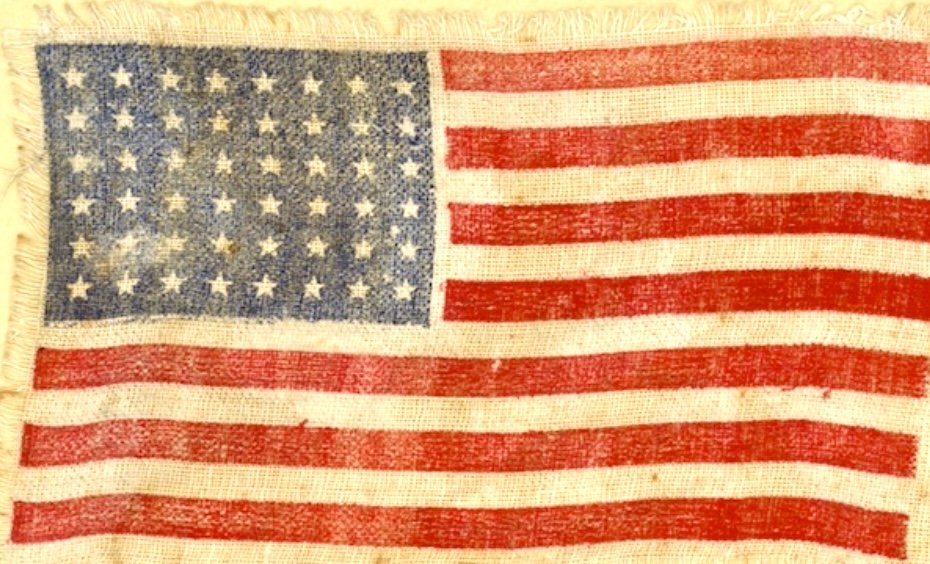
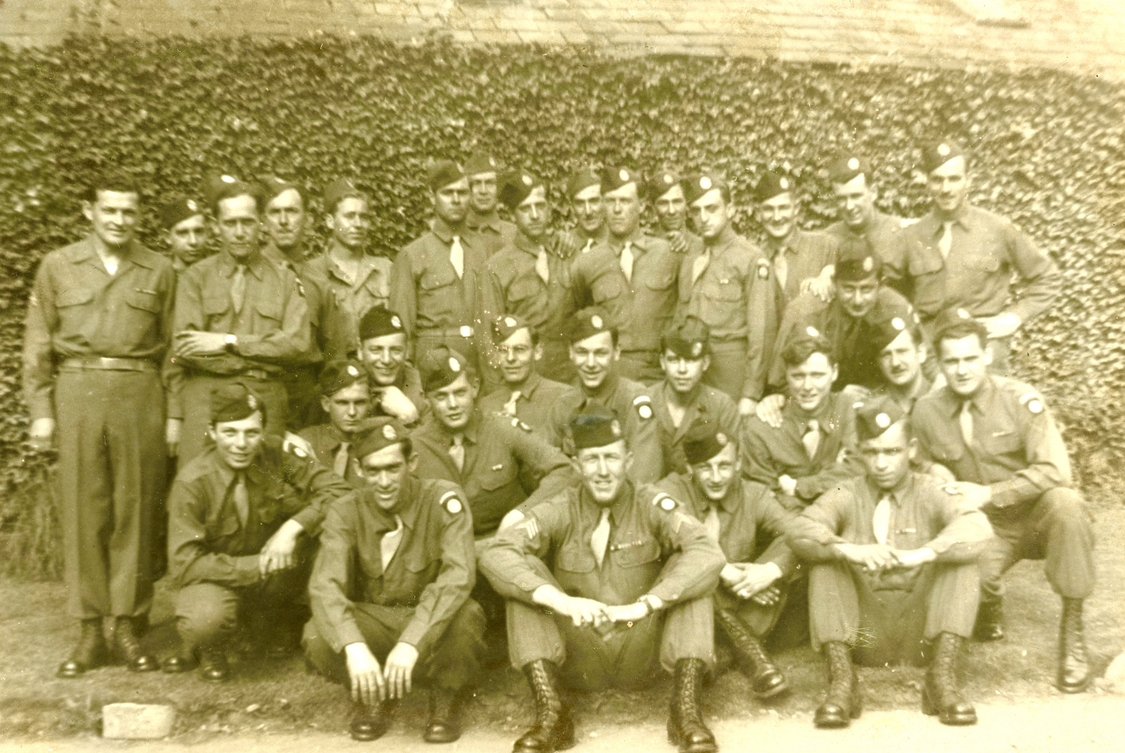

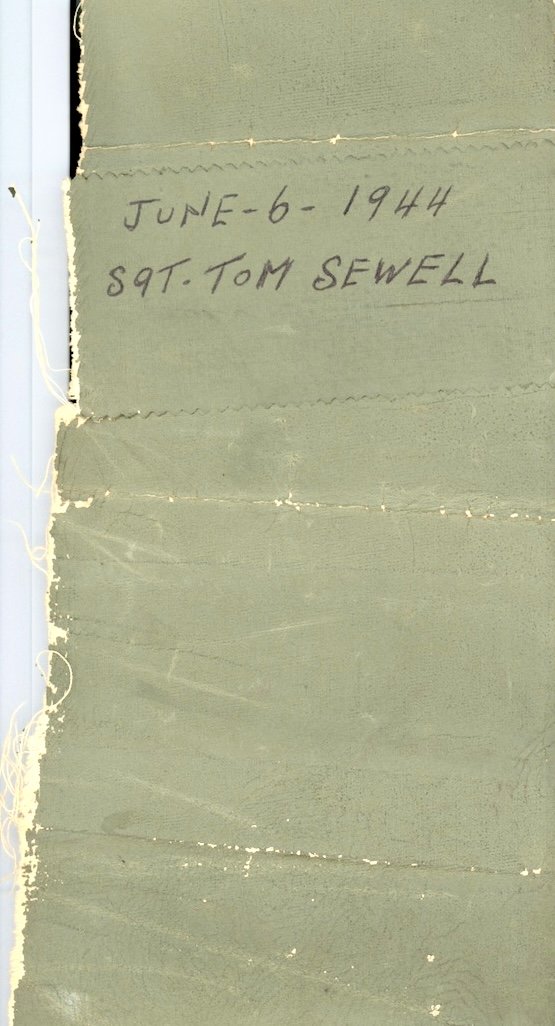
Travel
My trip to Ludwigslust, Germany, to attend the annual memorial of the Wobbelin Camp in May was cancelled at the last minute. I plan to attend the annual memorial in May 2024.
The first week of May 1945 the 319th Glider Field Artillery of the 82nd Airborne, led by Major Fred Silvey, were searching for hidden enemy arms and ammunition while vetting German civilians to determine who were Nazi officials or members of the SS. Their search revealed the Wöbbelin concentration camp just a few miles north of the town of Ludwigslust. The scene was out of a nightmare. Hundreds lay dead inside buildings and in open burial pits.
More Travel
Last month I traveled to the Amalfi coast of Italy, to remember an important event (see inset) of the 319th history.
Maiori Beach - September 11, 2023
Sailing from Bizerte, Tunisia, North Africa, the 319th landed on the beach of Maori, Italy, a small coastal town just north of Salerno the evening of September 11, 1943.
They immediately occupied a mountainous position 5 miles north of the beach known as the “Chiunzi Pass,” in direct support of the 1st Battalion Rangers, and Lt. Col. William O. Darby.
For the next 19 days the 319th fired more than 12,000 artillery rounds over the mountain range and through the pass targeting truck columns, troop movement and supply dumps, road junctions, enemy 88 gun positions and ammo supplies, tanks and rocket batteries as well as other enemy activity along Highway 18 just outside of Naples.
This past September 11th was the anniversary of the beach landing. About the same time the 319th landed 80 years ago, at 11:00 p.m., I toasted their memory and sacrifices made.
God bless these heroes.
One last thing
Ann Wuorinen, the daughter of B-Battery soldier John Pachmayer, submitted the photos below. They are a colorized version of the original pictures and depict the 7th section Ammo-Machine Gun crew, and a Waco Glider having seen better days. I must admit they are pretty cool.
A few recognizable faces; Thomas Sewell, Milton Goldfarb, Henry Rajhert, Gregor Flasch, Raymond Stabenow, Paul Saltenberger, John Pachmayer, Henry Lawson and John Qualls.
Thank you Ann!
(See below slideshow - arrows to click left/right)
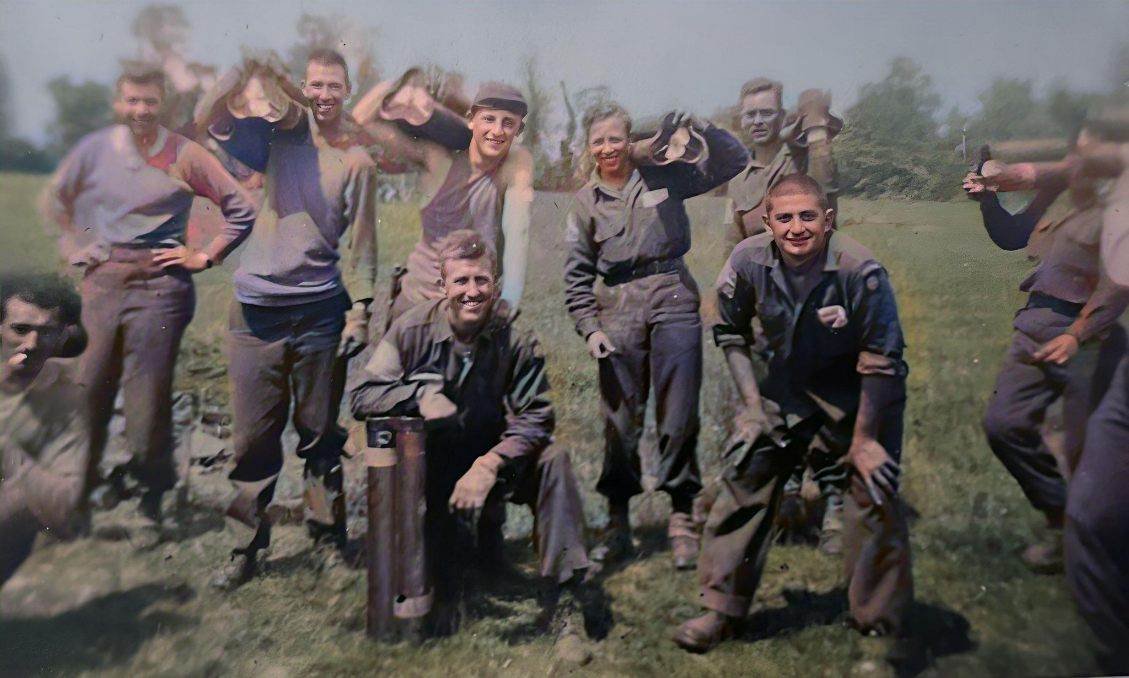
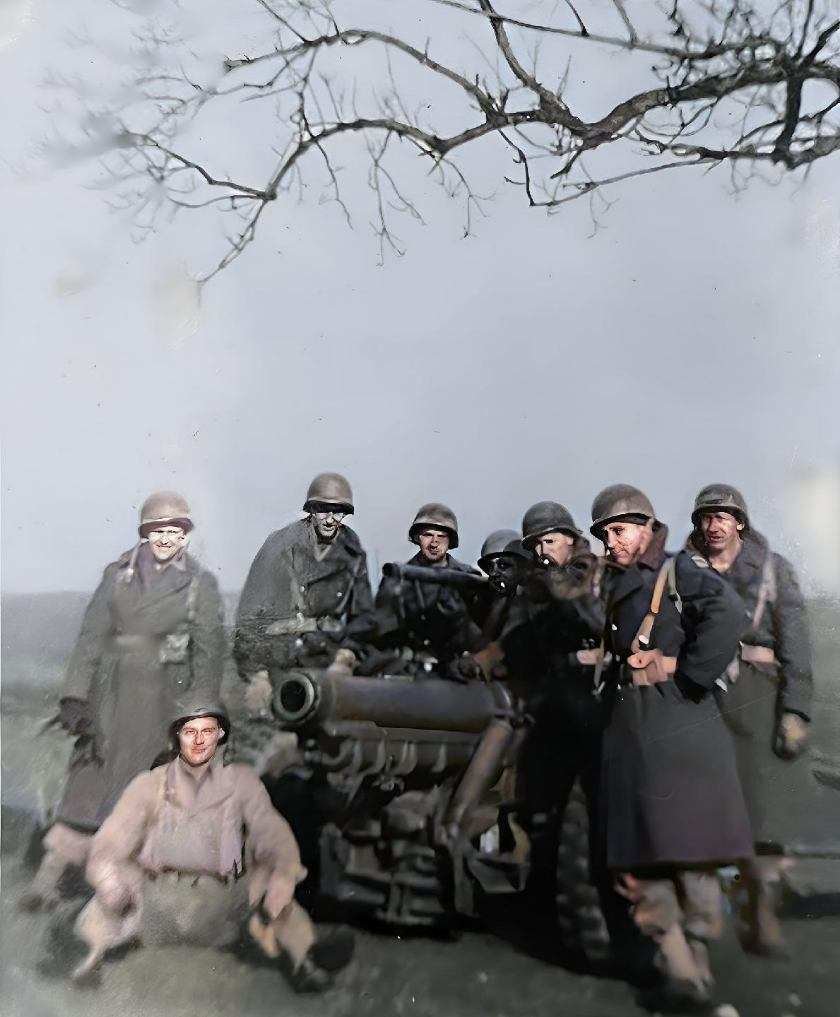

Before you go, check out below the new “search function” for 319gliderman.com
Searching the 319gliderman site
Recently we upgraded the search option with a function that works well every time. Thanks to the assistance of Slickstream, our enhanced search feature consistently delivers top-notch results, making it easier than ever for you to find the content you're looking for.
Now, when you initiate a search, you'll not only see the top results but also a list of additional results (see below) for your convenience.
Simply click on any result to view the corresponding content. If you need to revisit a previous search or explore your search history (arrow back) it remembers your search history for easy navigation.
This will enhance your overall experience and help you discover the content that matters most to you.
If you have any questions or require further information about this upgrade or any other aspect of 319gliderman.com please don't hesitate to contact me.
June 6, 2023
Today marks the anniversary of the D-Day landing and air assault of the Normandy coastline by the Allied forces.
79 years ago tonight our brave gliderman of the 319th Glider Field Artillery, 82nd Airborne, were loaded into British Horsa gliders at the RAF Membury airfield and towed by the 436th Tug Group across the English Channel.
As the 319th approached Utah Beach just before 11:00 p.m., enemy ground fire forced an early release of many of the gliders which resulted in hazardous landings. Two officers and fifteen enlisted men were killed, six officers and eighty-six enlisted men were wounded upon landing.
The 319th soldiers below were some of those killed in action on June 6, 1944.
Please take a moment to remember all of the brave soldiers who fought for our Liberty.
April 2023
Hello to all the 319 families and friends. No long videos of me talking with this update. But if you like, scroll way down the page to view prior information (last year) or videos.
Searching the 319gliderman site
At the top of each web page you will see a new search icon illustrated in the image below. I have highlighted the search icon with a red circle.
When you click on the search icon a space bar opens where you can type in any word then hit your enter key. Your search results should appear. However, like other computer temperaments the old “turn it on and off” seems to apply. Meaning, if you don’t get a search result, refresh your browser and try again. That seems to work every second time!
Just a quick summary; the SOLDIERS drop down menu will get you to the battery galleries for A, B, HQ and Medical Detachment, and the individual soldier stories.
The CAMPAIGNS drop down menu will get you to the official archive records for Sicily, Italy, Normandy, Operation Neptune, Operation Holland, The Island, Belgium and Central Europe.
The STORIES drop down (see inset) will get you to various stories displayed in a blog format.
As you can see the topics are varied. To mention a few: Group photos of the 319th from Camp Claiborne, Louisiana, through June 1945 in Epinal, France: Wartime Souvenirs & Memories contains images of just about any item the soldiers brought home (this album is always updating): “Fort Schuster,” a stone farmhouse used as a field hospital during the 319th’s first combat at the south end of the Chiunzi Pass: The Women's Land Army (WLA) recruited and trained women to work on farms left untended in England during World War II: A soldier Memoir of Captain John Manning of Middletown, New York.
What’s new?
From May 1943 through the end of the war approximately 400 to 500 men were assigned to the 319th. This includes officers and soldiers attached from other units.
At present 319gliderman.com has a photo(s) and/or content on 362 of the men so things are going well. I’ve been blessed with many new and old 319 friends who have shared their personal photos and memories. And I thank God every day for the ability to preserve those memories.
Most recently the Company Morning Reports (CMR) through the end of 1945 were obtained and are now part of the record. The latest CMR data affords the site some content on every WW2 319th soldier. Further research is ongoing for CMR as early as August 1943, corresponding Unit Journals, and personnel records from the St. Louis, Missouri archive.
The “319 News” (https://319gliderman.com/stories/319-news) was recently added to the STORIES section. The “319 News” was a newsletter created in December 1965 by A-Battery veteran Carl Davis of Mansfield, Ohio. It was designed to connect the 319 Glidermen and also a compendium of the names and addresses of the men, a vehicle for these veterans to stay in contact with one another.
The original news letters, courtesy of the Andrew Hawkins family, and some reunion photos are uploaded for viewing. The news letters ended in 1971 but they are fun to read. Please check it out. Your dad, grandfather or uncle may have dropped Carl Davis a line and shared an interesting memory. My father did in March 1967, much to my surprise.
The “Paraglide” https://319gliderman.com/stories/paraglide, was recently added to the STORIES section. Paraglide was a newsletter style publication of the 82nd Airborne Division Association that was first established in the fall of 1946. Its primary purposes was to serve as the “unofficial Division history” and to perpetuate the bond between the men who served in the 82nd Airborne.
The original issues, courtesy of the Raymond Stabenow family, are posted and fun to read. The Paraglide also featured advertising of 14 Karat gold finished 82nd Airborne pins for only $1.00, information on veterans assistance, and an occasional Bill Mauldin cartoon.
The Wartime Souvenirs & Memories section, https://319gliderman.com/stories/wartime-souvenirs, located in the STORIES section is ever changing with new images. Here you will find a collection of souvenirs and other memorabilia the soldiers sent or returned home with following the war. It is a collage of images; dog tags, poetry, soldier credentials, firearms, cameras, postcards, maps, rugs, telegrams, and much more.
Travel
If you are planning travel to Normandy in 2024 there are big changes coming to the Airborne Museum in Ste. Mere Eglise, France.
The museum is adding a multi-million dollar exhibit devoted solely to the glider troops who fought and died within miles of this location the evening of June 6, 1944. I have seen several renditions of the exhibit and it is superb.
The museum also offers memorial bricks which are displayed outside the exhibit areas along the pathways.
More Travel
Later this month I’m traveling to Ludwigslust, Germany, to attend the annual memorial of the Wobbelin Camp.
In May of 1945, the 319th Glider Field Artillery of the 82nd Airborne, led by Major Fred Silvey, were searching for hidden stores of enemy arms and ammunition and vetting German civilians to determine who were Nazi officials or members of the SS. They discovered a concentration camp, named Wöbbelin, a few miles north of the town of Ludwigslust. The scene was out of a nightmare. Hundreds lay dead inside buildings and in open burial pits.
An annual gathering of remembrance at the Wobbelin memorial site is conducted during the first week of May. This year I was invited to attend as a son of a liberator. I will report back about my trip. The following link is to a story written about the discovery of this camp and the 319th soldiers’s who walked the camp grounds.
A-Battery Sgt. Ted Covais said it best, “When we went into Italy, nobody was a Fascist. When we went into Germany, nobody was a Nazi. The locals denied knowing anything about the concentration camp. They denied its very existence. They were adamant about it. They said it’s all propaganda. We would never do anything like that. But they did. They did.”
It’s important to remember this part of the WW2 experience. History often repeats itself and we must pay attention to our world, trouble never sends a warning.
One Last Thing
One of the soldier families recently told me of a new book written about the WW2 glider experience. As we all know, combat glider missions were at the center of most of the 319th’s stories. Continued flight training was also mandatory for the 319th throughout the war and anything could go wrong during combat or a glider training exercise.
Author Scott McGaugh, captures the glider experience with his book, “Brotherhood of the Flying Coffin.” Written about the glider pilots of World War II, I couldn’t put this book down. I read it in one day and again the following day.
The combat glider was the only aircraft built to crash. I have never been more conscious of the glider missions and horrifying probability of a deadly landing.
Scott McGaugh and I are not affiliated. I recommend this book simply because it is a riveting story. He covers most, if not all, the combat and re-supply glider missions of WW2.
You can unsubscribe to this update, please let me know and I will remove your address
December 2022
The information below is referenced in the above video, hope you enjoy and find this informative
Thank you! to the following amazing soldier families
Marshall Brown, Raymond Carey, Lloyd Cattell, Ira Corbett, Alton Davis, Carl Davis, Joseph D’Apppolonio, Robert Dickson, Lewis Doherty, Duel Elmore, William Forsyth, Melvin Graham, John Gutshall, John Hardin, Calvin Hightower, Andrew Hornyak, Thurman King, Constantine Kokas, Joseph Mullen, Arno Mundt, Les Niemi, Hjalmar Olkonen, Rene Picher, Ralph Radosh, Larkin Reed, Raymond Smart, David Stelow, Milton Susman, Vito Armando, Enos Buckner, Wallace Edwards, Reuben Engel, Gregor Flasch, Milton Goldfarb, John Hrcka, Myron Lepkowski, Julian Martinez, John McGee, Alfred Nigl, Edward Pietila, Wilbur Pommerening, Ernest Raulerson, Carl Reinke, Paul Saltenberger, Archie Simeone, James Standard, Orville Stephenson, Walter Bedingfield, Vernon Blank, Albert Brown, Clifford Eckard, Oran Fitzsimmons, George Furmanchik, George Garcina, Emanuel Gracie, Felix Greene, Orville Linengood, Billie Martin, Marion McGrady, Walter Mendelowski, Leroy Petersen, Thomas Sharkey, Benjamin Stinson, Edwin Webb, Edward Whitley, James Wilcoxson, Benton Lytton, Walker Fry, Oliver McLemore, Armand Valentine, Ben Winks and Frank Hoatson.
HOTEL: DOMAINE-DE-LHOSTREIRE and Views from Normandy beach near Hotel Domaine:
(click on link below to access hotel website)
EUROPCAR Rental:
https://www.europcar.com/en/car-rental/locations/france
Normandy American Cemetery:
OVERLORD MUSEUM:
http://www.overlordmuseum.com/en/
Bayeux, France:
http://www.hotel-churchill.fr/en/
Airborne Museum - Church with Parachute Memorial - Sainte Mere Eglise, France
https://www.airborne-museum.org/en/
La Fiere Bridge Guest House WEBsite and bridge
lafierebridge.com
and General Gavin’s foxhole:
Utah, Omaha Beaches and Pointe du Hoc:
Veterans Breakfast Club:
https://veteransbreakfastclub.org
MARY GREENE and FINDING FELIX:
Normandy Beach guides
see link below
“Finding Felix”
By Mary Martha Greene
While planning a recent trip to France, I had the option to stay over a couple of days in Paris. I knew I wanted to figure out a way to get to Normandy, to retrace my father – Beaufort’s first family court Judge Felix Greene’s route with the 82nd Airborne. I knew Daddy was in a glider regiment but wasn’t entirely sure which one. For some reason, I thought it was the 325th Glider infantry regiment.
I searched online and found complete rosters of the 325th, but Daddy’s name was nowhere to be seen. In frustration one night, as I was trying to go to sleep, I wasn’t so much praying to God as I was talking to Daddy in my head and said “Please just help me figure this out.” The next morning, 319th popped in my head – maybe it was buried in there from long ago, maybe he put it there, I will never know. At any rate, I got up, searched his name and there it was. A website called “319gliderman.com”, which listed the 319th regiment with the 4 companies attached to it. There was a page for each member of the regiment, I clicked on Daddy’s picture, but nothing else was listed under his name.
At the bottom of the page was the typical “If you’d like to contact us” link, so I clicked on it and sent a brief email asking for more information about my Dad. Not an hour later, I got a response “Your Dad is all over the company records, probably mentioned by name and his signature more than any other soldier because he was the Chief Warrant Officer for the division. It would be easier to explain your Dad’s role and the background information about the 319th in a conversation.”
After an exchange of phone numbers, I spent about an hour talking with Bill Bonnamy, whose dad was in the “A” Battery company of the 319th. He’s become the keeper of the history of the regiment and has determinedly tracked down any bit of information about as many of the men that he can find. He sent me some pictures, some of which I’d seen before, some of which I hadn’t. Some of the ones I’d seen I had no idea where they were taken, he filled in a lot of the blanks, and we’ve had an ongoing conversation ever since. He sent me many of the daily reports – signed by my Dad – so I could trace exactly what they were doing from the time they made a very dangerous glider landing on D-day. He also sent me a book, “Battery: C. Lenton Sartain and the Airborne G. I.’s of the 319th Glider Field Artillery”, which traces the unit from their origins at Camp Claiborne in Baton Rouge, Louisiana until the end of the war and beyond.
Now to figure out how to get there.
The University of South Carolina Alumni Association hosted a breakfast on June 6th in commemoration of D-Day to show clips of the Movietone News collection from photographers embedded with the troops. Following the program, I spoke with the presenter and curator of the Movietone news collection, Greg Wilsbacher. I told him my Dad was in the 82nd, he replied his great uncle had served in the 101st. We exchanged cards and decided we’d meet at a later date to talk more. I met with him several weeks later, and took a trove of Daddy’s maps, pictures and other information, most written after the battles to recap how many men, how much machinery and other equipment they landed in each battle. The 82nd, and my dad, had already been in the thick of it from North Africa, Sicily and Italy.
To say Greg was less than impressed with my “archival” abilities would be an understatement. It happened to be raining that day – not terribly hard – so the biggest thing I could find to transport the maps and other documents in was a large Krispy Kreme shopping bag that was pretty deep. Greg graciously spent about two hours with me, going through the maps and other items. He wrapped some of the things in archival tissue paper and gave me a rather large archival quality box to start storing them in.
At one point, he asked me to feel the paper of one of the maps. It felt like regular, if somewhat old and crunchy paper.
“Now feel this one” he said. I could tell it felt different, more the consistency of a dollar bill. “That paper has more cotton in it, that would have been a map they’d have carried with them into battle, so that if it got wet it wouldn’t disintegrate as easily.” Something I would have never known.
As time got closer for the trip, I knew I wanted to hire a private guide, so that I could spend more time at St. Mere-Eglise, the village where daddy and the 82nd landed. Several friends gave me suggestions and older, pre-covid contacts, but Greg came through again and recommended Eva Ruttger. After a few e-emails back and forth, she was there to meet me at the train station in Bayeux, following a very early morning of getting to the train station in Paris at 5:00 a.m.
After a quick breakfast and a little planning conversation, we were off for the day. The first stop, along a four lane “superhighway”, as they call their Interstates, was the landing zones of the glider divisions of the 82nd. The fields were divided by the famous hedgerows, combinations of trees and shrubs, often with a ditch on either side. Normandy, being right on the western coast of Europe, is naturally very windy, and the original purpose of the hedge rows was to serve as wind breaks, and to also keep the dairy and beef cows fenced in. The Allies had aerial reconnaissance photos that showed the hedgerows, but from the air you couldn’t tell how tall they were. According to Eva, the French resistance had also warned the planners of the operation about them, but they still underestimated their height and thickness, and the problems they would cause on D-Day and breaking out from the beaches in the following days. Another problem for the glider landings was the Germans had cut trees and placed pointed poles, referred to as “Rommel’s asparagus”, after German Field Marshall Erwin Rommel. These stakes, placed in open fields to tear into the wood and canvas gliders, created an even more hazardous landing zone.
She also showed me the XXX (I have asked Eva for the name of these), flood gates contained under bridges that allowed the French to control the tides at various times of the year. The Germans put wooden poles in these to keep them open, and flooded the fields surrounding the area, in a further effort to stymie any airborne landings.
After a few pictures, we were back on the road to St. Mere-Eglise, the heart of the 82nd’s landing area. The beautiful church dominates the square, hanging from the steeple is a white parachute and a dummy dressed to represent Private John Steele, who got stuck on the steeple of the church coming down. He was hanging there for most of the battle, but fortunately on the opposite side from where most of the German troops were positioned. There were two German snipers in the steeple, but they were afraid if they fired at him, it would give away their position to an American sniper, so they left him there until the bulk of the battle was over with. The people of St. Mere-Eglise really weren’t aware of Pvt. Steele’s story until the film “The Longest Day” began filming there in 1961.
The church itself contains many beautiful stained-glass windows, two of which are dedicated to the airborne operations. The first one was dedicated in 1946 and was designed by the son of the mayor of St. Mere-Eglise who was 10 years old at the time of the D-Day landings. It depicts the Virgin Mary and Christ child above a burning Sainte Mere-Eglise with paratroopers and planes descending around her.
The second window, Eva explained, was given by the people of St. Mere-Eglise to commemorate the 25th anniversary of the invasion. It seems that many of the soldiers who participated in the battle did not start returning to Normandy until the 25th Anniversary in 1969. This window depicts Saint Michael, the patron saint of paratroopers and includes the 82nd Airborne Division, the lion of Normandy, and the Saint Mere-Eglise insignia. Symbols for each of the combat jumps made by the 82nd Airborne Division during World War II are also represented in the window. The same artist that designed the first window also designed the second.
Seeing these windows made me realize it must have taken time for the participants of the battle to begin to talk about it and share with their families -- I don’t remember Daddy really talking about it, at least not the me, until the 30th Anniversary in 1974, when I was a teenager.
On the opposite end of the square, they have built a museum dedicated to the Airbourne assault. One building houses a glider made from wood and canvas, although apparently the kind of glider Daddy landed in where the British Horsa gliders, made completely out of plywood and thought to be more “secure” Can you imagine? These gliders contained no engine, were towed across the channel by a C-47 some of which had already made one drop previously of paratroopers. The planes delivering the paratroopers flew west to east across the Cherbourg Peninsula, but the gliders had to be going into the wind to get them to slow down enough to land, so they were towed east to west, meaning they had to be towed over Utah beach, were the aerial bombardment was still going on to knock out some of the German Atlantic line defensive positions that still had troops pinned down on the beach. Surviving the crossing was their first challenge, surviving the landing was their next challenge. The planners of the mission, including Gen. Dwight “Ike” Eisenhower and General Omar Bradley expected a 50% casualty rate for the paratroopers and a 70% casualty rate of killed, wounded or seriously impaired in the gliders before their units could assemble on French soil. Thankfully, those rates did not materialize, although looking in the glider and some of the footage from the landings, I realized how lucky my dad was to survive it and how lucky I am to ever have been born.
At the museum, they had a display of the different colors of parachutes that were used in drops. Of course, the paratroopers had camouflage patterned chutes, and their back-up shoots were white. (This is often portrayed wrong in the movies showing them descending with the white chutes.) But they would also drop supplies using a color-coded system of chutes – a red chute indicated ammo, a bright blue chute indicated medical supplies, and yellow was small artillery equipment and ammo such as shells and mortors.
From St. Mere-Eglise, we headed north to see were the 319th established their headquarters on the high ground about the town. On the way, we stopped at a cornfield – it pretty much looked like many of our cornfields on St. Helena island in the early fall with the brown cornstalks. But a marker explained that on this site they built an airfield. In order for the planes to have something more substantial to land on, the engineers brought in large rolls of what appeared to be squared off chain length fence. They laid them down to build the runway, so that the planes would not get mired down in the mud. Ava showed me a picture of what the runway looked like when it was completed, then she said “Now turn around and look at that fence.”
Sure enough, if you looked closely at the fence of the adjacent farm, after the war, the farmer had used the leftover landing strip material to rebuild his fence, part of the famous hedgerows, that had been destroyed by the battle. This scene was repeated in numerous locations with sections of the airfield repairing and replacing fences all over the countryside. Reuse and recycle were important to people who had been living under German occupation for 4 years and had very limited resources after the war.
After a look at the site of their HQ, we headed south to the small town of Chef Du Pont, where the 319th provided artillery support to the 508th paratroopers who were to take and hold the bridge to secure the way for the troops when they could begin moving out from the beaches. The “Battery” book described this in great detail, and there is now a passive park there to commemorate the fierce fighting that took place. The area reminds you a lot of our South Carolina lowcountry, with a meandering stream of water and low, marshy areas. It was incredible to be standing where I knew my father had been, and as a friend of mine put it, “Can you imagine what he’d have said if at that point during that battle someone told him many years in the future he’d have a daughter that came back here to see it all.”
We could have spent the entire day exploring just in and around St. Mere-Eglise, but I also wanted to do justice to the men who’d landed on the beaches, and if they hadn’t taken those beaches, my dad and the other paratroopers who’d landed inland would probably have all been captured or killed.
We headed to Pointe Du Hoc, the landing site for the famous Second Ranger Battalion. Standing atop that cliff and looking at the German gun placements they were facing, it is amazing that anyone was able to scale it, much less take out German machine guns once they reached the top. There was also a concrete bunker, that had taken a direct hit from an incoming missile – the large concrete remains are scattered over the area where the bunker was once housed, and you realize the force that was necessary to make the concrete “fly” that far.
Pointe Du Hoc overlooks Omaha beach, so we headed there next. One of the most moving sites is the monument to the boys of Bedford Virginia. Bedford provided a company of soldiers (Company A) to the 29th Infantry Division of the National Guard’s 116th Infantry Regiment and were some of the first to go ashore that morning. The company lost 19 men, and 2 more died later during the battle. The town of Bedford had a population of 2,200 at that time, so proportionally they lost more men than any other town on D-Day. There is a statue to the men of Company A at Omaha Beach, and an identical statue at the National D-Day Memorial, located in their hometown of Bedford. It is a very humbling experience to stand on that beach, or any of the other landing sites, and think about the courage it took for those men to come ashore under withering gun fire and artillery barrages, and to continue to come in waves until they gained a foothold and could break through the enemy lines.
Our last stop of the day was at the Normandy American Cemetery. Set high on a cliff overlooking the landing beaches, you can’t help but be taken aback by row after row of crosses and stars of David. Eva had planned our trip so that we would be there for the retiring of the flags and the playing of taps, an hour before the cemetery closes. As we were walking around the cemetery, she pointed out the landscaping – oaks, long leaf pines, holly bushes, pyracantha. When the cemetery was being built following the war, they brought over native plants from America, so that the soldiers buried there would be surrounded by the trappings of their home country, a tradition that is still carried on to this day. And the one plant that touched me the most – the purple plumes of sweetgrass plants, which would represent our boys from the Low Country who are buried at the cemetery.
One of the most moving stories, that began at the original D-Day cemetery near St. Mere-Eglise, was that of Mrs. Simone Renaud, the wife of the mayor of St. Mere-Eglise at the time of the battle. Following the battle but while the war was still going on, Mrs. Renaud began to get letters from the mothers of soldiers who had died and were buried at the original cemetery, asking her if she might put flowers on their sons’ graves. Over time, more and more letters began to arrive. Mrs. Renaud was fluent in English and took it upon herself to answer each of the letters, in a show a gratitude to the soldiers who had given “their last full measure of devotion” as Abraham Lincoln once described those who died for their country. And remember those different colors of parachutes that were used by the 82nd and other Airbourne units? Mrs. Renaud and other ladies in St. Mere-Eglise began to use the silk in the white, back-up parachutes to sew small bags. They would fill the bags with some of the dirt from the cemeteries where the soldiers were buried and send them to their families thousands of miles away in America, with the gratitude of a grateful France. She continued this act of service for the next 44 years, until her death in 1988. (There is a movie about her called “The Mother of Normandy”, you can view the trailer for the movie on You Tube.)
My Father passed away in 1980, before they were recognized as “The Greatest Generation” by Tom Brokow, before the “Band of Brothers” or “Saving Private Ryan”. About two summers before he died, the movie “A Bridge Too Far” came out, about Operation Market Garden, another famous though less successful battle in which the 82nd played a major role. He talked a little bit about that battle, mostly how much they all hated the British General Bernard “Monty” Montgomery. Oh, how I wish he’d have taken out all those documents that were stored in his study of our house and spread them on his desk to explain to me what they’d done and why it was important. But like a lot of the men who went and fought, he never talked that much about it. They went and did what they were called on to do – to literally save democracy and return freedom to millions of people – but they came home, went back to their jobs, lives and families, and if they thought of their wartime experiences, they rarely if ever spoke of it. Thus it took some research and tracking down his steps to find out more about his wartime service but it was so worth it in the end.
By 9:00 p.m., I was safely back to my hotel in Paris, tired, but happy and a full heart having traced my father’s participation in this once in an age battle, and even more respect for him and the others of his generation. I’ve got his maps and papers stored more securely in the archival paper and boxes that Greg Wilsbacher gave me. As we were wrapping up our first meeting back in June, he was looking at the maps and other papers Daddy had brought home from the war. He asked me “Miss Greene, what are your long-term plans for these documents?” I told him I hadn’t really thought about that. The University of South Carolina, both my Father and my alma Mater, hopes to create a collection of memorabilia from their graduates who have served in every battle the country has fought in since the University’s founding in 1801. In a few years when they get the library for the collection set up, I think that is where they will be donated to be studied by future generations, I think he’d be pleased.
P.S. If you desire not to receive these updates please let me know and I will unsubscribe your email address.

























